September: Decent Work and Economic Growth SDG 8
Posted on September 26, 2023.
IN THIS ISSUE
Letter from our Executive Director
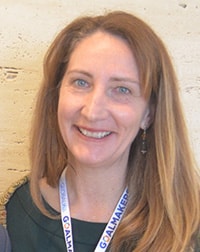
Sustainable Development Goal 8 aims to create lasting, inclusive economic prosperity and decent jobs for everyone. Achieving this goal advances other important goals, such as reducing poverty, improving quality education, and creating sustainable cities and communities. However, we are not on track with creating sustained economic growth in many countries around the world. We are at a moment of time to prepare for the future and train youth in jobs that will provide a decent wage and allow communities to thrive.
GlobalWA members are addressing barriers to economic growth on various levels, including skill development, investments in entrepreneurs, and community support. Reaching full and productive employment for all is the primary aim of SDG 8 and our GlobalWA members are working with partners to achieve this goal. Read more about this work in this month’s issue campaign.
Technology is often essential in preparing for future jobs, both in the Global South and in the U.S. Our GlobalWA members are starting to use Artificial Intelligence (AI) to enhance their ability to deliver services. GlobalWA will have a members-only event in October about AI and one of our keynote speakers at our Goalmakers Annual Conference will address this issue. We will email members more information about the October event soon and registration for the annual conference is open to all. You can register for our Goalmakers conference here. We hope you can join the conversation.

Kristen Dailey
Executive Director
Back to Top
Issue Brief
Training for Prosperity: Transforming Workers and Communities from Poverty to Self-Reliance
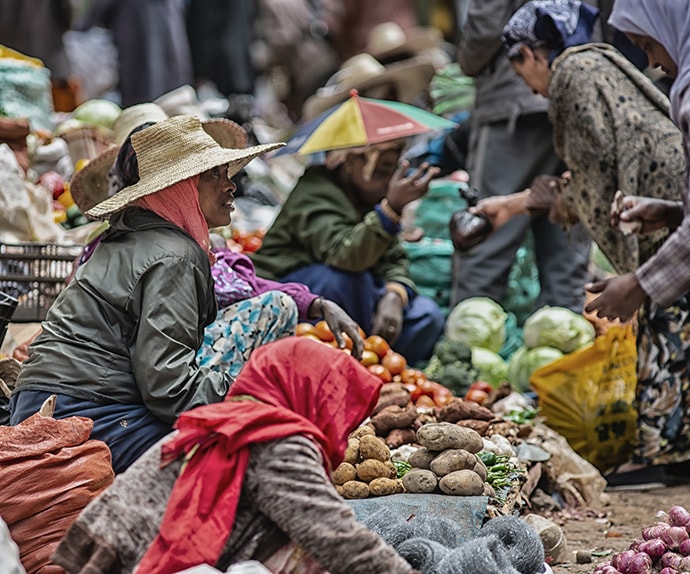
Ethiopian farmers at market. Photo: Erik Hathaway/Unsplash
By Aneesh Chatterjee
Building a system of sustainable economic prosperity and employment opportunities afforded to all, the core of Sustainable Development Goal 8, is a process designed to impact other sectors of development in tandem – such as the alleviation of poverty, the promise of Goal 1. With global unemployment projected to reach 208 million in 2023, alongside accelerating costs of living, solutions that empower workers with skills and opportunities can not only address the goal of sustainable economic growth, but actively raise underprivileged groups out of poverty.
2021 insights revealed by Our World in Data’s SDG Tracker show that on a global scale, despite recorded annual growth rates in GDP per capita across many nations, the annual changes in real GDP per employed individual – a measure of how well a country’s resources are being utilized by their labor force to maximize productivity – shows mixed results, with more instances of reduction in some countries. The Tracker also reveals rising unemployment rates, even in countries that reported substantial growth in their GDP. The effective utilization of the world’s workforce remains one of the greatest roadblocks – and opportunities – for enterprises seeking to manifest the tenets of SDG 8 and opens pathways to escape poverty.
GlobalWA members display steadfast innovation and care in their strategies to build systems of economic success, starting with people themselves.
Training the Future: Skills Development Vital for Goal 8
Members have built high-impact enterprises to deliver solutions across a myriad of sectors and focus areas. A common priority is providing people around the world with the high-demand skills and entrepreneurial flexibility that economic prosperity demands. Across sectors, our members have prioritized the inculcation of valuable skills, and the pursuit of connecting people with resources, as powerful forces of change in economically underprivileged communities.
Microsoft, supporting over 250 nonprofit organizations worldwide, addresses the goals of SDG 8 through high-value skills training, STEM platforms for developing solutions to crises, investing in digital infrastructure, promoting workers’ rights through social accountability, and joining forces with impactful partners to maximize efforts toward economic resilience.

Microsoft’s Skills for Jobs program aims to teach digital sector skills to nearly 10 million people by 2025, partnered with the African Development Bank to train local labor forces and enable them greater career flexibility. With up to 220,000 youth having benefited from training, the enterprise also offers a Digital Ambassador program with 500 trainees. Beyond Skills for Jobs, Microsoft partners with UNESCO alongside other contributors to facilitate the Global Skills Academy, an enterprise that provides vocational and technical training across 150 countries, in an effort to provide millions of potential graduates with opportunities in education, employment, and financial freedom. The Academy aims to equip large sections of the global workforce with skills fit for a more sustainable, diverse and robust global economy by 2029. Other training initiatives supported by Microsoft, such as the i.c.stars initiative to provide low-income adults with skills and education in tech-oriented career fields, and the gener8tor program, providing digital skills training to low-income people of color across the US, exemplify Microsoft’s dedication to inculcating a resilient and adaptable workforce across nations and sectors. Involved in 40 partnerships to deliver education and training resources, Microsoft works alongside other enterprises to fortify the capacities of governments in enabling access to learning resources for local communities.
While organizations like Microsoft work through motivated partnerships to support a plethora of cross-sector initiatives, other members adopt specialized focuses in select industries to maximize their impact and engage intimately with the communities in their target regions.
Transformative Education: Specialized Approaches
One organization working to develop economic resilience at the individual level is the S M Sehgal Foundation. Focused on developing the agriculture sector, Sehgal’s diverse considerations span across water infrastructure, community engagement, crop technologies and beyond. Through engagement and training in 2,061 villages across India, Sehgal directs communities and individuals, not just away from financial struggle, but toward long-term economic prosperity.

Reaching people in communities isolated from resource access and encouraging greater participation in local infrastructure is one strategy deployed by Sehgal. Their Local Participation and Sustainability Program aims to build the foundations of economic resilience and autonomy in rural communities in India by engaging directly with locals and connecting them with regional agencies and government programs that they may not be aware of, enabling them access to resources otherwise unreachable. With an additional, specialized focus on empowering women in these communities, the program provides a discourse platform for women to bring up and address community issues, learn valuable leadership and communication skills and become more autonomous in their abilities to access resources and government services.
Sehgal’s Agriculture Development Program promotes capacity-building; by training farmers to develop their income streams through diverse entrepreneurship skills, locals are taught to implement more lucrative business models, build resilience through food security measures, and introduced to more effective cultivating techniques for greater yield and subsequent income. Field demonstration sessions are conducted to train farmers first-hand on the benefits of pesticide control, soil testing, seed-sowing, biofuel usage, and other sustainable practices designed to mitigate risk and maximize potential yields.
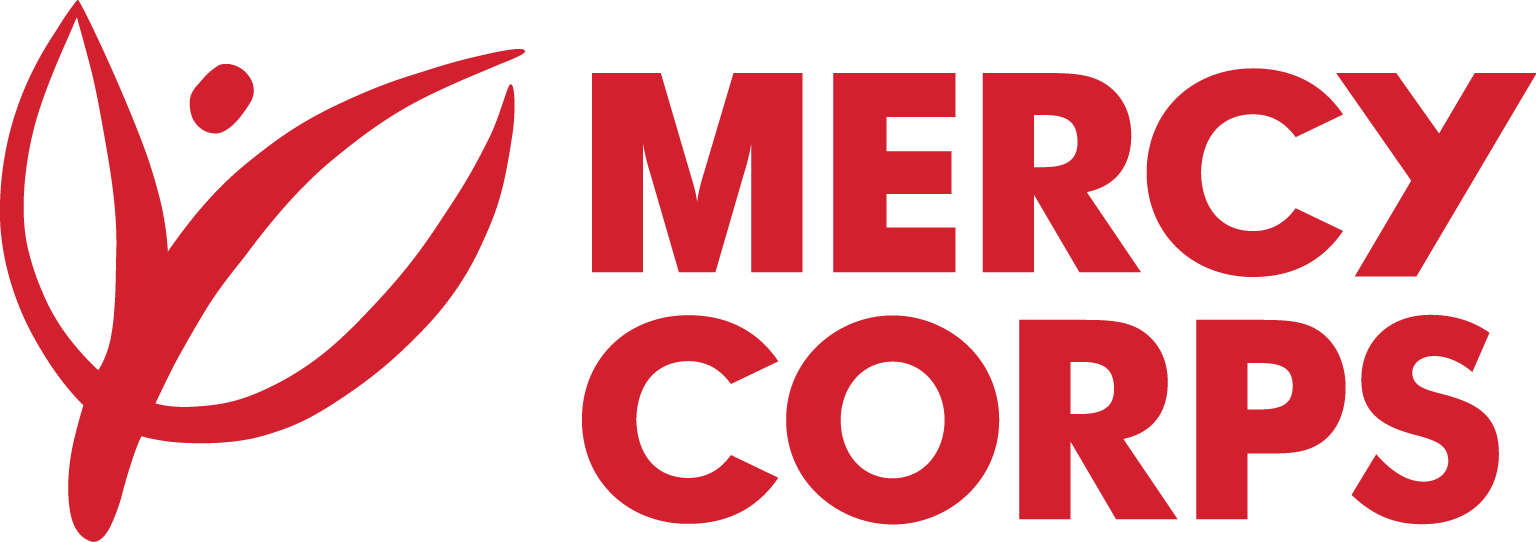
For Mercy Corps, access to training and resources is equally critical for personal growth and economic stability. The Gaza Sky Geeks program, funded by USAID and established by Mercy Corps, grants a platform for tech sector skills development and education in Palestine, working toward sustainable and prosperous career opportunities for Palestinian youth. Gaza Sky Geeks offers comprehensive coding courses, freelancing opportunities, digital marketing training and a startup incubator program, leading to substantially increased access to economic growth: a cumulative $5 million in earnings reported by program graduates, and a 99% success rate for program-trained job applicants.

Building financial resilience in the Pacific Islands is Rise Beyond the Reef, through their Traditional Contemporary Arts & Crafts Program. By helping women and girls generate income from traditional artisan products, especially those in particularly isolated communities, the program connects skilled workers with reliable markets, teaches leadership and autonomy, and builds financial independence for women facing gender-based marginalization in the realm of income opportunities. Operating across nine islands, the program offers a viable alternative source of income for families dependent on traditional agriculture; with goods ranging from handmade jewelry to canvas prints, home decor, clothing and a myriad of other artisan products, crafters now have access to tourist markets.
The Arts & Crafts Program pays workers at rates between 55-65% of Fiji’s minimum wage, working to ensure that cash transfers are handed over individually, tracked with receipts and remain consistently inclusive of labor costs and raw material expenses. Beyond paying workers, the program invests in every area of the supply chain: training workshops for villagers, production equipment, product development consulting, marketing for artisan goods (including paid social media ad campaigns), reliable tagging and shipping of orders, and subsidized transportation of products to relevant markets. Rise Beyond the Reef exemplifies comprehensive and culture-conscious economic empowerment, building reliable systems for long-term financial prosperity.
The Hunger Project (THP), founded to free struggling regions from poverty and starvation, conducts high-impact interventions to grow the financial capacities of individuals and communities. Operating in 12 countries across Africa, South Asia and South America, projects focused on the poverty crisis prioritize women for skills training and connect them with credit sources, building up their abilities to stimulate local economies. Novel income streams like sewing and cow-fattening are introduced to help diversify cash flow, providing workers with tangible routes to alleviate financial burdens.

In tandem with capacity-building for labor forces, members acknowledge the importance of technology in transforming a workforce. For a more sustainable and dynamic global economy in the near future, training the workforce with adaptive technologies in mind is proven essential by GlobalWA members.
Versatile Technology: Adapting through Barriers
Understanding that economic prosperity demands that solutions be adapted to the capabilities of digitization, financial inclusion is another development priority for Mercy Corps. With over 1.7 billion adults in the world without legitimate bank accounts, Mercy Corps recognizes the value of technology in connecting people to valuable financial resources – particularly when increasing access to banking services has correlated with reductions in dire poverty. A study of financial inclusion tactics in Jordan brought to light the JoMoPay (Jordan Mobile Payments) Mobile Wallet, a method of connecting Jordan’s population – over 60% of which is unbanked – with formal financial services, legitimizing their incomes and increasing resource accessibility. Mobile wallet alternatives have also been deployed in Syria, where they’ve helped to bridge the separation of traditional financial freedom from marginalized groups.
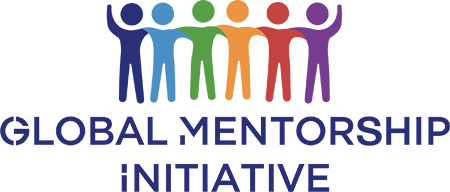
Incorporating training with technological innovation is the Global Mentorship Initiative. Their fully remote mentorship program, accessible worldwide, connects students with industry professionals to foster versatile, transferrable soft skills across multiple sectors, generating a talented and adaptable workforce. With a 76% success rate for students finding employment after graduating the program, a large number of testimonials from past students demonstrate the value of the program, both in the realms of career success and personal development.
In the realm of education, a similar project is Mercy Corps’ MicroMentor. A platform connecting upcoming entrepreneurs with volunteer mentors, MicroMentor facilitates vital access to assistance with business development and helps mentees implement and grow their enterprise effectively – a venture with resounding success, according to their 2022 Impact Report. By partnering with Verizon Small Business Digital Ready and Grab Indonesia, MicroMentor has attracted 95,000 new entrepreneurs and 21,000 mentors in 2022. By partnering with Grab, a mobile app providing versatile services, MicroMentor was able to reach over 9 million users in Indonesia with opportunities to develop their trade and access entrepreneurial possibilities. Their partnership with Verizon also helped them reach over 140,000 prospective and established entrepreneurs in the US. As of 2023, the platform is the recipient of a $1 million grant from Google.org, with full-time developmental support to build MicroMentor’s first proprietary mobile app, enabling unparalleled access to millions of users across the world.
The aforementioned Agriculture Development Program by the S M Sehgal Foundation also develops agricultural practices through technology. With subsidized prices, farmers are provided machines that can reduce manual labor input, increase reliable consistency in yield and performance, and eliminate uncertainties. Farmers are trained on safe machine operation and encouraged to develop their income by renting out machines as well.
Other members have developed resilient and innovative products to fortify communities. The Talking Book, developed by Ampilo, is a robust device built to deliver educational content to remote regions, providing people with vital opportunities for literacy. A cost-free option with hours of audio content in multiple languages, Ampilo’s product breaks barriers to education access for underprivileged groups.

While some members use industry-leading technology solutions for delivering training and education to labor forces, others prioritize developing the regional infrastructure of target communities to be legitimized, well-represented and best-equipped for the future economy.
Philanthropy and Representation: Legitimizing Infrastructure
Infrastructure development is a key priority of the S M Seghal Foundation. Through the empowerment of farmer-producer organizations, Sehgal promotes stronger, more reliable access for farmers to credit, supply chain management, resources and technologies that ensure the most fruitful output. Beyond finances, Sehgal trains farmers on water conservation through multiple practices, ascertaining an approximate reduction in water consumption by up to 85% in some communities – a vital improvement in regions where water scarcity poses a crippling challenge to basic infrastructure.
Adopting a similar strategy, the Rural and Agricultural Finance Program (RAFiP) by The Hunger Project, successfully completed in Ghana in 2017, empowered rural workers with access to micro-financing and built representational legitimacy by organizing farmer groups into cooperatives. The program organized 60 cooperatives, connected 876 people with bank loans and facilitated training on agricultural methods and microfinancing for 14,774 farmers. The infrastructure of community banks were fortified with software upgrades and computers, and 22 credit unions were legitimized through registration with the Credit Union Association of Ghana.
Beyond legitimizing workers through cooperatives, THP also prioritizes the inculcation of independence. Their Epicenter Strategy seeks to empower communities by inculcating sustainable self-reliance, implemented in nine African countries. By prioritizing the empowerment of women, encouraging collective effort and fostering connections with local governments, a community’s transformation toward self-reliance is measured through comprehensive data collection and evaluation of set indicators. Established THP epicenters provide progress reports that demonstrate a community’s efforts to meet specific targets, ensuring data transparency with regular community meetings. Since the establishment of the strategy in 2008, 68 epicenters across Africa have met the criteria for self-reliance and economic independence.
Another organization taking on broad sector development to drive economic growth is the Ventures initiative by Mercy Corps. Aimed to support and scale startups with capacities to benefit up to 3.3 billion disadvantaged people, Ventures has raised nearly $400 million for 43 startup enterprises since 2015, focused on building resilience for at-risk communities across a variety of developmental sectors – including agriculture, climate-smart technology, finance and food security. Bypassing traditional roadblocks to financial support, Ventures adopts decentralized cryptocurrency distribution with partner companies to ensure that recipients receive the funding they need.
A product of Mercy Corps’ Resilient Future Thesis, the Ventures program sees the climate-driven disruption of conventional systems of operation as a nascent opportunity to restructure processes into more sustainable methods, growing cross-sector resilience for a future certain to face the increasing complexities of climate change. By investing in sustainability-focused startup enterprises, Mercy Corps encourages further growth in climate-conscious industrialization, enables financial flexibility for new organizations in underdeveloped regions, and grants individuals the economic freedom to not only grow out of financial struggle, but apply their skills to further the development of their respective communities. Fund II, the next Ventures initiative, aims to invest in 30 startups working to develop resilience against climate change.

Utilizing the same approach is Capria, an investment enterprise working to stimulate entrepreneurship in the Global South. The Capria Ventures Global South Fund II aims to assist 20-25 startups across cities in India, Indonesia, Nigeria, Vietnam, Brazil, Mexico and Kenya, reaching close to their funding target of $100 million. Focusing on a broad range of sectors from climate development to fintech, logistics and healthcare, Capria’s beneficiaries will incorporate artificial intelligence to fortify their operations.
GlobalWA members demonstrate the value of approaching issues at every level of engagement – from multi-sector philanthropic partnerships, to industry-specific skills development and community legitimization. Understanding the requirements for Goal 8, organizations have prioritized the inculcation of in-demand skills, the unhindered access to education and mentorship, opening routes to funding opportunities to encourage entrepreneurship, and encouraging enterprises to adopt sustainable practices in every step of their mission.
In addition to the above organizations, the following GlobalWA members are working on SDG 1 No Poverty and SDG 8 Decent Work through their programs in communities where they work.
ACT for Congo
No poverty? Big scope, yet our partners have been working on this topic in Goma, eastern DRC, for twenty-plus years. Poverty is related to cultural practices, to land tenure, to education, to government, to a justice system based on rule of law, to peace–or lack of any of it. Goma has been an epicenter of conflict since 1992, off and on.
Our partners have targeted specific groups over the years: women with fistula, teen moms, domestic workers, internally displaced people. They have developed a team and integrated approach that begins with individuals being listened to, recognizing their own trauma, and growing a new community by being in a support group. It takes time to develop trust. Information is introduced gradually: how to prevent disease, sexual and reproductive health, small business practices, literacy, vocational training, saving circles that grow into credit/loan associations.
ACT for Congo accompanies our partners as they define and carry out their own vision for their community in Congo—Goma and Beni, in ways that respect individuals, encourage peace, and develop capacities in people to support themselves and their families. Our collaborations foster health, empower women and cultivate community.
Future of Fish
Fundación Future of Fish Chile (FoF Chile) works to elevate convenience and innovation within the responsible seafood movement while “achieving higher levels of economic productivity through diversification” (SDG 8) in Chilean caletas, or small-scale fishing communities. When initiating work in a community, FoF Chile conducts extensive research to better understand the target fishery, with much emphasis placed on identifying and building alliances with local stakeholders in the region’s artisanal fishing sector. Through these partnerships, several tenets of SDG 8 are also advanced such as promoting formalization, a focus on value-added products, and the broader decoupling of economic growth from environmental degradation.
In this way, fisherfolk, aquatic food harvesters, and divers from different parts of Chile are encouraged to venture into responsible fishing— generating locally sourced value-added products, creating their own alternative markets, and identifying new and innovative ways to reach clientele. FoF Chile simply facilitates the stakeholders’ ideas and ensures that project specifications are in line with the principles of responsible fishing—that no IUU fishing takes place and that their harvest methods generate the least possible ecological impact. Equally important to FoF Chile’s work is promoting positive social outcomes, such as providing a fair income and advancing formal and transparent seafood trade throughout the value chain, including logistics, marketing, and gastronomic services. FoF Chile also believes that making stories visible to consumers, through storied fish with accessible technologies, our efforts are brought full circle and increase the growing movement of responsible seafood production and consumption throughout Chile.
Give2Asia
Give2Asia’s steadfast commitment to poverty reduction is undeniable. Since 2001, they’ve channeled over US$535 million to empower 2,500 local charities in 30+ countries. Give2Asia grants span myriad facets of poverty alleviation, from supporting disadvantaged women in India with entrepreneurship opportunities to enhancing early childhood education in rural China to promoting sustainable natural resource management to livelihood farmers in Cambodia. Moreover, Give2Asia’s DisasterLink program, spanning 20 disaster-prone locations, unites more than 50 pre-positioned community-based organizations to support the most vulnerable populations when disaster strikes and promote disaster preparedness and resiliency.
Global Mentorship Initiative
GMI prepares underserved students and refugees to get their first job after graduation. This is accomplished through a structured, short-term, online mentorship with a business professional enhanced through the power of AI.
GMI has over 9,000 students and mentors registered, and we partner with 45 universities and youth associations in 92 countries. In 2024, GMI will add over 5,000 new students for mentorship. Microsoft has provided more than 700 mentors for the GMI program in the past year.
The mentorship program is designed to make it easy to be a great mentor without a significant time commitment. And it’s built to give students a consistent, high-quality experience.
Students learn how to present themselves to the business world, how to speak with confidence, and they are building a business network through LinkedIn. They learn how to set smart goals for their careers and how to think like a job recruiter.
GMI’s mentorship program introduces AI to graduating students to use in all stages of their job search. This includes preparing their resume/CV, building their LinkedIn profile, communicating with job recruiters, and interview preparation.
Global Partnerships
Global Partnerships (GP) is an impact-first investment fund manager dedicated to expanding opportunity for people living in poverty. Since GP’s founding in 1994 and the launch of its first fund in 2005, GP and its affiliated funds have invested in sustainable solutions that empower people to earn a living, provide basic necessities for their families, and improve their lives.
The investments aim to deliver clear and compelling impact in four dimensions:
- Broadening opportunity across different facets of poverty including, but not limited to, economic opportunity, education, energy, health, housing, sanitation, and water.
- Deepening inclusion of poorer and underserved people, including women and the rural poor.
- Serving millions through sustainable and scalable solutions that can positively impact the lives of millions of people.
- Improving lives by empowering people to earn a living and meet their basic needs.
GP does this while seeking to preserve capital with a modest financial return for all fund investors.
SG Foundation
The SG Foundation has always supported SDG #1 – elimination of poverty. Over time since the establishment of the SG Foundation in 1984 we have come to focus on children and education as the best means of tackling poverty. Education, of course, does not simply entail getting children into school. It means having access to clean water, nutrition, and healthcare. It also connects with SDG #8 – decent work and economic growth. Jobs and income are much needed components to not only get children to school but keep them in school. In Central America (where SG works), many families depend on children to help in the fields or household or otherwise generate income. Staying alive necessarily trumps school. SG Foundation accordingly supports non-profits that help farmers, small businesses, etc., to generate family incomes. We favor working with women who are inclined to be more enthusiastic about educating their children, but our work is not exclusively with women.
We are excited to be a part of the Global WA program where we can connect with like-minded organizations seeking to make our world a better place.
Upaya Social Ventures
Upaya Social Ventures is building a dignified economy by providing investment and support to early-stage businesses creating sustainable livelihoods for people living in the most extreme poverty. At Upaya, we believe that dignified jobs are a human right, and that dignified work has a catalytic impact on families, communities, and economies. That’s why we invest in early-stage social enterprises that are creating safe, stable, inclusive, and rewarding job opportunities for people living in extreme poverty.
Since our founding in 2011, Upaya’s portfolio companies have created over 30,000 dignified jobs across India.
World Vision
World Vision is committed to ending extreme poverty. One of the markers for positive change is World Vision’s livelihoods model, Transforming Household Resilience in Vulnerable Environments (THRIVE) in Tanzania. THRIVE is designed to equip families to lift themselves out of poverty through building improved and resilient livelihoods that enable significantly better incomes, food security, and child well-being. A recent evaluation conducted by TANGO International on this program showed significant improvements when comparing endline data (2020) to baseline data (2013).
THRIVE household annual incomes skyrocketed to a reported $1,370 a year from $138 a year— 9.93 times higher than at baseline. Families used the money to improve their children’s education, housing improvements, medical care, and investments in their businesses. 40% of families participating in THRIVE were more food secure than control households at endline. The percentage of THRIVE households reporting that they could provide for the basic needs of all children in the household increased from 46.8% at midterm to 60.2% at endline. At endline, 85.7% of THRIVE households reported they could obtain a loan if needed, compared with 13.8% at midterm. THRIVE households who engaged in on-farm natural resource management grew from 24.7% at midterm to 45% at endline.
Yemen Relief and Reconstruction Foundation
Now in its ninth year of conflict, Yemen remains the largest humanitarian crisis globally, with 24 million people out of the population of 30.5 million in need of humanitarian assistance. The conflict has left 4 million people, including 2 million children, internally displaced, and at least 500,000 public sector workers have been without salaries for over six years.
The war has exacerbated food prices for a country that imports more than three-quarters of its food needs. YRRF has multiple projects to enable poor and vulnerable families in Yemen to generate income in a sustainable way to improve their food security, self-reliance, and dignity in a time of severe deprivation. In 2022, YRRF distributed 585 sheep, 600 egg-laying hens (with 1 rooster per family), and 140 beehives. Livestock serves as a source of protein, nourishment, and income to families in need.
YRRF is currently supporting 20 girls from 3 governorates who are completing a three-year midwifery diploma. In June, YRRF provided a training course for 1,500 women and girls. This 45-day training course provided instruction in nursing and first aid, handicraft production, sewing, and hairdressing. Additionally, in January 2022, YRRF distributed 35 sewing machines to women in need and conducted sewing training.
Back to Top
Organization Profile
Dalberg Advisors: Global Perspectives Rooted in Local Realities
By Tyler LePard
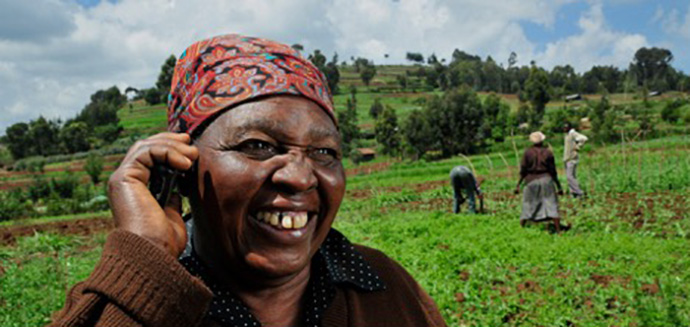
African farmer. Photo: Dalberg
Dalberg Group is “a global group of changemakers working to build a more inclusive and sustainable world where all people, everywhere, can reach their fullest potential.” Dalberg is the largest advisory firm globally dedicated to social impact, and its work with over 2,000 clients over the past two decades has spanned the waterfront of global development issues. The mission-driven firm has a deeply rooted presence in the Global South, with approximately 800 staff based in 30 offices across the world and serving clients in more than 90 countries. This gives them global perspectives that are firmly rooted in local realities.
Origin Story & Evolution
Dalberg was started in 2001 by ex-management consultants who wanted to dedicate their careers to purpose-driven work. The founders saw an opportunity to apply hypothesis-driven problem-solving processes common in the private sector to intractable issues in the global development arena. Dalberg brought data-driven strategies and a high pace of execution to decision support and strategy development to major institutions like the World Bank, United Nations, USAID and others.
Over the past two decades as the global development landscape has changed – including with the creation of major organizations like the Global Fund and GAVI, as well as the increased scope of private investment seeking opportunities in emerging markets – Dalberg has adapted its offerings. More recently, the firm’s climate practice has been busy supporting a range of clients with the development of new approaches, investments, and initiatives to address climate change across a range of country and sector contexts.
Dalberg Advisors is one of the Dalberg businesses. They are a strategic advisory firm that “combines the best of private sector strategy skills and rigorous analytical capabilities with deep knowledge and networks across emerging and frontier markets.” Dalberg works with three broad categories of clients: (1) global development institutions, (2) companies seeking to generate positive impact and growth, and (3) philanthropies and nonprofits big and small, local and global. They address sector issues like access to finance, improving access to healthcare services, and access to energy solutions that meet people where they are. They also serve clients with a functional lens such as strategy, organizational effectiveness, and finance.
No Poverty and Economic Growth
Much of Dalberg Advisors’ work relates in some way to Sustainable Development Goal (SDG) #1: No Poverty and Sustainable Development Goal #8: Decent Work and Economic Growth.
“No Poverty is SDG #1 for a reason. Poverty and the absence of economic opportunity is a fundamental driver of other issues and constraints on people’s ability to live the life they want. Economic opportunity is core to the whole development enterprise. It’s all related,” said Greg Snyders, Partner, Dalberg Advisors. “Many of the clients we’re serving are working on issues related to economic well-being across the board.”
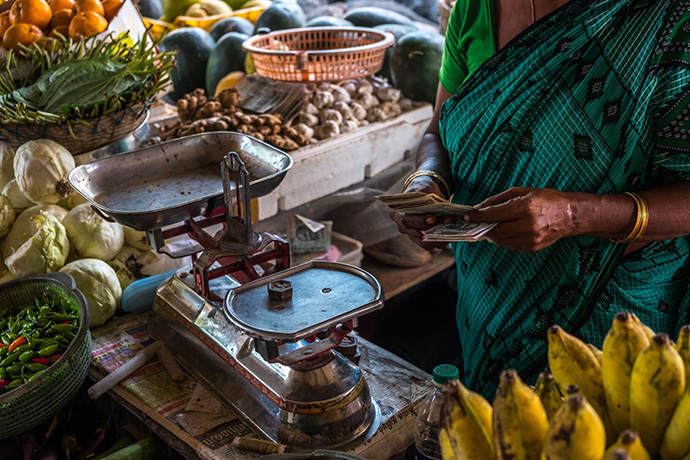
Indian businesswoman. Photo: Dalberg
Dalberg helps countries and regions develop inclusive growth agendas and programs where all people can benefit from, and participate in, economic growth.
One example focuses on decent work and economic livelihoods. Over a few years, Dalberg Advisors helped a major funder with strategy across 10 countries in Africa related to accelerating opportunities for young people and the transition from education to employment pathways. There was a significant gap between what educational institutions delivered and what the market needed. And, left unchecked, this problem would only increase. In the next 30 years, it’s estimated that the populations of more than half of Africa’s countries will double. An absence of opportunities for young people to work and to support their livelihoods creates problems for society. Within the 10 focus countries, the Dalberg team tailored the strategy for the country context and to design programs that would persist over the long term. This strategy helped the funder identify the significant issues, organize their work, and allocate resources appropriately.
Financial Inclusion
Another common issue that Dalberg works on is financial inclusion. An estimated 1.4 billion adults globally lack access to formal financial services like bank accounts. Dalberg helps clients identify opportunities to expand access and accelerate usage of financial services. This helps more people have the security and convenience of digital payments for school fees or to support relatives, rather than carrying large amounts of cash over long distances. It helps people build wealth through savings accounts. Farmers and entrepreneurs can get access to fair and lower-cost credit. Dalberg also helps their clients make sure the right market structures are in place and break down some of the digital financial barriers.
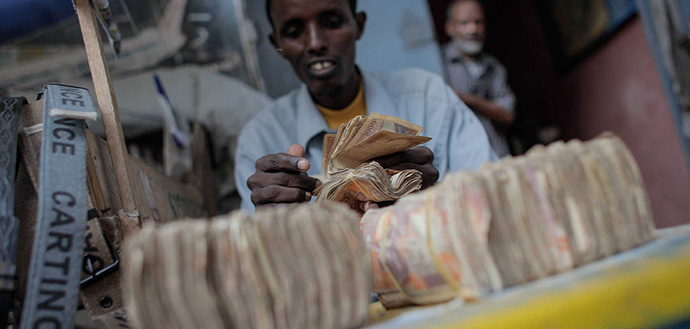
Remittances. Photo: Dalberg
Get Involved
Dalberg provides services to clients, from strategy to execution, such as providing new ways to frame problem statements, better information for decision making, and identifying new investment or programmatic opportunities.
Increasingly, Dalberg is supporting the development and co-creation of solutions and initiatives that they think would be useful for the ecosystems in which they work. “We love helping–not just supporting clients on specific problems, but we love helping groups of people to co-create new solutions that would be impactful for the world,” said Greg Snyders, Partner, Dalberg Advisors. “So many issues are cross-cutting. There’s rarely a single point of view from a sector that is going to be adequate to address the scope or scale of a problem. We encourage clients to think from a systems lens.”
Dalberg also continues to find opportunities to grow their geological footprint. They just opened an office in Vietnam. They also have a new office in Bogota, expanding their Latin America presence.
Back to Top
Goalmaker
Greg Nelson, Chief Technology Officer, Opportunity International
By Amber Cortes
Opportunity Knocks: Pioneering Digital Transformation with Optimism
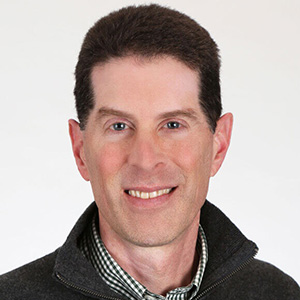 Greg Nelson spent most of his career witnessing (and participating in) historic digital transformation. Now, he’s bringing it to the global development world.
Greg Nelson spent most of his career witnessing (and participating in) historic digital transformation. Now, he’s bringing it to the global development world.
Nelson started out at Microsoft in 1995, “which was basically when the internet as we think of it was just beginning,” he says.
At Microsoft, he managed to work in almost every department of the company in a wide variety of roles: engineering, partner and business development, marketing, and sales.
But in 2020, after 26 years at Microsoft, Greg Nelson was ready to close that chapter of his career and move on to other challenges.
So he pivoted to an interest developed back when he was a Rotary Scholar in Cape Town, South Africa, working with an organization that specialized in micro lending. It was the first time he had heard of microfinance, an approach to financial inclusion started in the 1970s by founder of Grameen Bank Muhammad Yunus.
It made an impression on him.
“This is helping people create their own livelihood. You give them training, you give them a little bit of capital to start their business or run their farm, and off they go.”
After retiring from Microsoft in the middle of COVID, Nelson joined the board of Opportunity International, a nonprofit formed in 1971 to help uplift people out of poverty. Nelson wanted to bring his 26 years of experience in the tech world to help build the organization’s digital capacity across its programs and help team leaders “re-envision the ways that we deliver services to our clients and our partners.”
“But I quickly realized that, once we got through the envisioning and the initial strategy for digital transformation, we also needed to be able to operationalize it.”
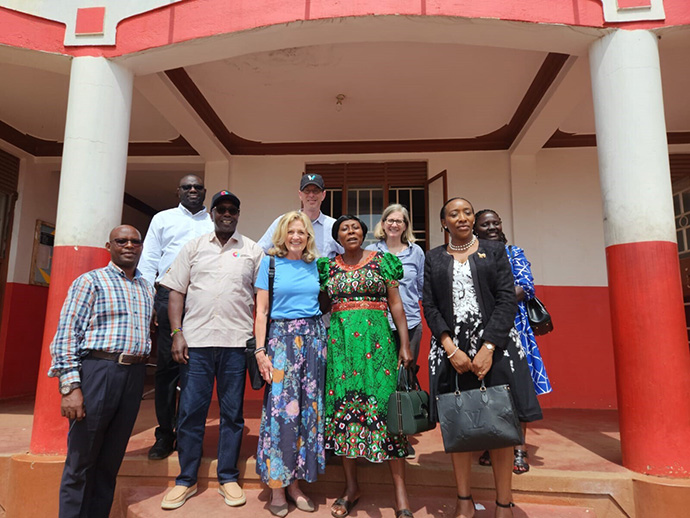
Board members visit a school in Africa. Photo: Opportunity International.
Nelson rolled up his sleeves and joined Opportunity as their new Chief Technology Officer (CTO) to jumpstart the process, help build the right team, attract donors and supporters, and get the work underway.
Nelson and his team at the Digital Innovation Group (DIG) use human-centered design, a discipline established at the Stanford Design School and firms like IDEO, to develop personas of clients that Opportunity International serves. Not just unique to tech, human-centered design can be applied to everything from architecture and healthcare to new businesses and startups.
“And I certainly believe the right way to think about the challenge—or the opportunity—is to start with the people,” says Nelson.
These personas are based on real-life research into Opportunity’s demographics. There’s Faustina—a smallholder farmer in rural Ghana with a limited educational background who owns a smartphone, and Kojo, a day laborer looking for work. Both clients, says Nelson, can benefit greatly from relatively simple and inexpensive technology that can help locate seed prices, find work at a fair rate, check the moisture and nutrient levels of soil, and more.
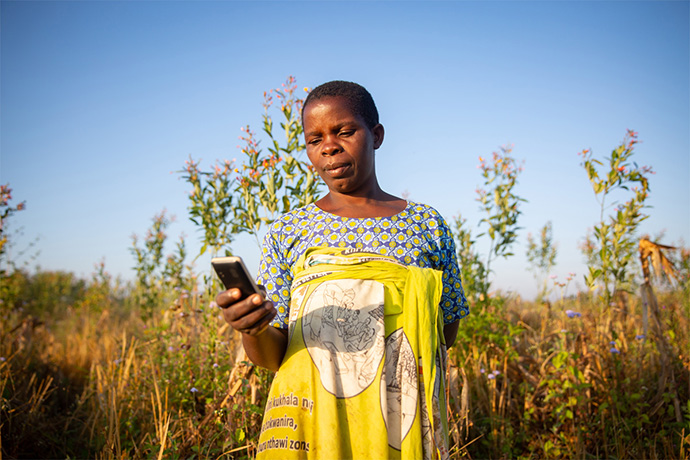
African with mobile phone. Photo: Opportunity International
When it comes to innovation as a concept, Nelson summons a quote from science fiction writer William Gibson: “the future is already here, it’s just not equally distributed.”
“It is unbelievable, even compared to five years ago, the amount of power and capability that is available to us – but also to Faustina and Kojo. And the delivery of that power is right there,” says Nelson.
“There’s no reason that a farmer in Nairobi should be farming in a fundamentally different way than a farmer in Nebraska.”
And Nelson and his team aren’t stopping there. They’re also utilizing the “game changing” power of AI to create a ChatGPT-type platform specific to the needs of Malawi farmers.
Nelson’s time at Microsoft afforded him the leeway and resources to imagine a better world and build solutions, and trained him to look at the world through a technology lens.
“And it’s a fundamentally very optimistic lens,” he adds.
Beyond the operational practices Nelson brings with him from the tech world lies something a little more intangible, but no less real, that impacts his work at Opportunity.
“The people I worked with, the teams I was on, the leaders I learned from and how I was able to help people learn and help them build their own careers, that’s the legacy from my point of view – more than all the products I shipped and all the projects that I worked on.”
To that end, Nelson has brought together a team of experts from places like Meta, Google, and Microsoft to form a Tech Advisory Council for Opportunity International to “help us find the sweet spots, where the needs of our clients and the capabilities of tech are meeting in the same place.”
Nelson acknowledges that nonprofits can have a harder time developing and executing digital transformations, compared to big tech companies where checkbooks fly open at the drop of an app.
“I mean, Microsoft’s a Big Idea Factory. It’s this amazing kind of wonderland of ideas with a huge number of resources to go chase those ideas,” Nelson says.
Even strapped-for-cash nonprofits can level up their big ideas in the fundraising game by working on their elevator pitch, and Nelson was able to hone his own elevator pitch – in an actual elevator – with elevator pitch master Steve Ballmer from Microsoft.
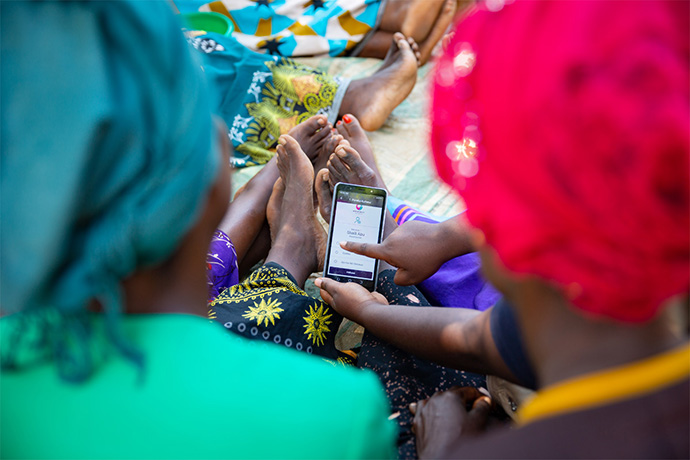
Photo: Opportunity International
“I think the ability to take a complicated challenge and idea and distill it into fifteen seconds, that’s the skill. And I think every nonprofit out there, every worthy 501c3 organization is built on some big ideas. But can you distill them down in a way that other people will want to hear and get excited about? You’re working there for a reason, you’re passionate about it. But can you engage and recruit other people into that vision?”
Another challenge that Nelson observes in the NGO world is fragmentation—a scarcity mentality of nonprofits believing they are all competing for the same resources. It’s better to see a potential partner as a potential collaborator.
“Donors will be excited by that. And then the money is going further, being spent more efficiently. You’re each bringing your own expertise, your own capabilities in a collaborative way. That’s what the donors want. I mean, I’m a donor. That’s what I want.”
Collaborating and building partnerships and bridges between people who use the SDGs as their north star is the only way, Nelson says, that the ambitious goals of the SDGs will ever be realized. And of course, bringing that sense of optimism that comes with dreaming big.
“The technology, the ability to deploy it, the ways that we can reach people, that data we can collect to drive learning loops. I’m incredibly optimistic about how we go after poverty in our lifetime.”
Back to Top
Welcome New Members
Please welcome our newest Global Washington members. Take a moment to familiarize yourself with their work and consider opportunities for support and collaboration!
Save Kids Trust (SKT)
SKT India provides healthcare to numerous slum communities in Jaipur India. At SKT US, we help with fundraising, web and admin support. Savekidstrust.org
Back to Top
Member Events
September 26: Pursuing Women’s Economic Empowerment in a Destabilized World – World Affairs Council
September 28: How Companies, Indigenous Peoples and Local Communities are Partnering to Advance Human Rights and Conserve Nature – Earthworm
September 30: Lifting Those Left Behind Benefit Dinner | The Rose International Fund for Children
October 6: Agros International: Tierras de Vida 2023
October 17: A panel discussion about our bi-directional Malawi Residency Program & Partnerships. – Providence Global Programs
October 25: A Night In Afghanistan | Benefit for Sahar Education
Back to Top
Career Center
Ecosystem Services Technology Officer FSC Investments & Partnerships
Quality Assurance Consultant The Max Foundation
Program Manager – Operations The Max Foundation
Office Manager / Administrative Specialist Linksbridge
Director of Finance and Operations Seattle International Foundation
Director, Business Development Splash International
Grant Writer Splash
Communications Officer The Max Foundation
Cultural Orientation Volunteer International Rescue Committee (IRC)
Airport Pickup Volunteer International Rescue Committee (IRC)
Grants & Contracts Manager Snow Leopard Trust
Check out the GlobalWA Job Board for the latest openings.
Back to Top
GlobalWA Events
November 30: VIRTUAL: 2023 Goalmakers Conference
December 7: IN-PERSON: 2023 Goalmakers Conference
Back to Top
60 Decibels and Upaya Join Forces
Posted on September 19, 2023.
As a component of the Quality Jobs Index, 60 Decibels is partnering with Upaya Social Ventures in the Dignified Jobs Collaborative.
By Shruti Goel from Upaya and Tripti Singh at 60 Decibels
The 60dB Quality Jobs Index aims to enable organizations and investors at the forefront of sustainability and social impact to understand the quality and impact of jobs they are providing.
For employees worldwide, their jobs continue to be an unrewarding experience that scarcely provides enough to get by. 80% do not feel engaged at work and the cost of disengaged employees is over $7.8 trillion to companies.
Continue Reading
STAR-Ghana AVID Project: A Game Changer for Women’s Shea Butter Processing Quality and Income
Posted on September 18, 2023.
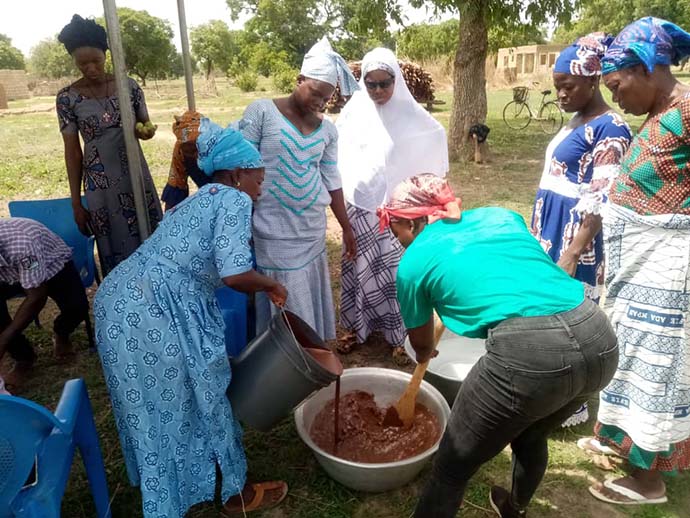
A Q&A with Project Officer Gilbert Nkpeniyeng
In April, Amplio Ghana launched a new project with STAR-Ghana Foundation to train and economically empower women working in the shea butter processing sector in Lambussie District in the Upper West Region of Ghana. The AVID project began in April 2023 and will run through June 2024.
Continue Reading
August: Our New Pangea Giving Program
Posted on August 24, 2023.
IN THIS ISSUE
Letter From Our Executive Director

On August 1, 2023, after nearly a year of work, Global Washington finalized a merger with Pangea Giving, a Seattle-based giving circle that provides grants to community-based, grassroots organizations in Latin America, Southeast Asia, and East Africa. Pangea Giving is now a program of GlobalWA. Read our full Press Release here.
This is a very exciting moment for both organizations. As a program of GlobalWA, Pangea will be able to increase its member engagement, capacity, educational activities, partner relations, and programs in Seattle. For GlobalWA, having Pangea as part of its growing number of programs increases the ability for GlobalWA member organizations to co-create and partner with organizations based outside the U.S. for increased impact, and will create additional avenues of involvement for philanthropists. All with the ultimate vision to create a more equitable, healthy, and prosperous world.
Our Issue Campaign this month includes an interview with a Pangea Giving grantee, Executive Director Robert Kalulu of Child Empowerment Programme in Uganda; an interview with Pangea board members about the power and importance of site visits; and an article by one of the Pangea founders, Allan Paulson, about the founding and core principles that have guided Pangea since their formation in 2003.
More information about Pangea membership can be found here.
Also, a reminder that early bird rates for our 14th Annual Goalmakers Conference will be in effect until September 13th. We hope to see you there!

Kristen Dailey
Executive Director
Back to Top
Organization Profile
Pangea’s Core Values and Principles
By Allan Paulson, Founder of Pangea Giving
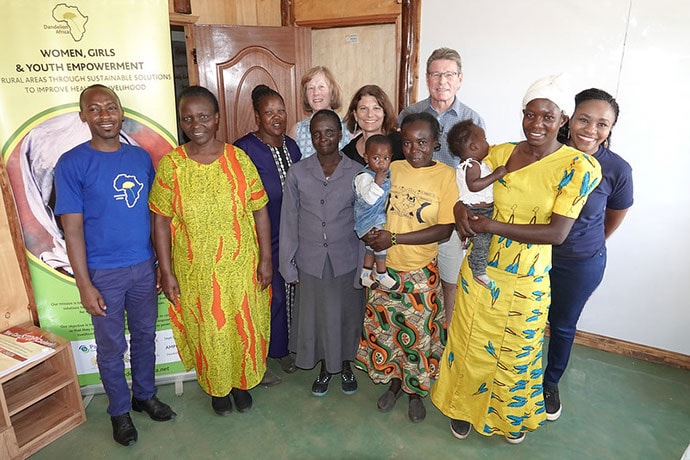
The Pangea team with four mothers with children in Dandelion’s programs. Photo: Pangea
Pangea Giving made its first grants in 2003 after a year of planning by a handful of people that grew to 13 members by the time we received and evaluated our first proposals. On this 20th anniversary, it is worth reflecting on the values and commitments that have brought us to this day as we become part of Global Washington.
The first thing that comes to mind is that we are a community. From the very beginning we met together in person, usually in someone’s home over a meal to make plans, learn about philanthropy and the needs of communities, evaluate proposals, learn about successes and challenges. We have always been a democratic community, making decisions through careful discussion, usually by consensus. And we decided early on that we wanted to be a learning community, taking a hands-on approach to understanding the needs of underdeveloped communities and learning from them how we can best be of help. This meant that we would conduct the entire process of making grants ourselves, from sourcing and evaluating proposals, to making site visits, to monitoring and evaluating the results and deciding how that informed our next steps. The site visits, where we could see for ourselves, became a wonderful part of the Pangea learning experience. Some of our partners told us that we were the first international donor to ever actually visit them. While not all of us could make site visits (which were at our own expense), we committed ourselves to communicating what we learned through robust educational meetings.
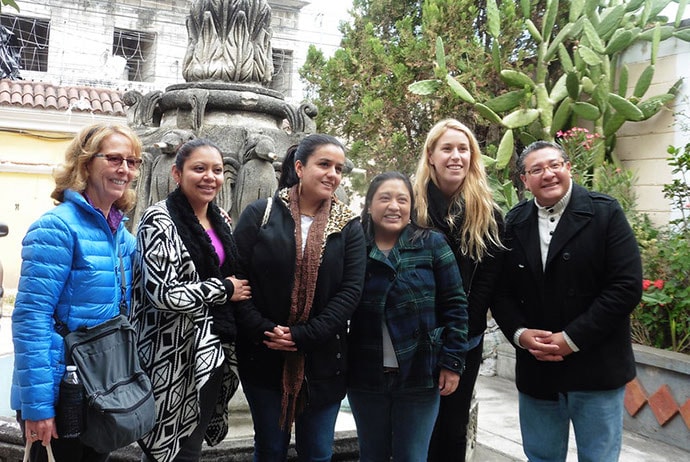
Pangea with ASOGEN team, Chimaltenango, Guatemala. Photo: Pangea
An essential part of our learning focused on figuring out what philanthropy meant to us and what our role and responsibility is to the people to whom we make grants. We were not engaging in acts of charity, which are often one off, emotion driven attempts to provide humanitarian relief by a superior giver. Charity often professes to address poverty, and we struggled with that characterization of people in the global South. Many of us knew from our own experiences that people in underdeveloped countries are rich in culture, community relationships and human wisdom, even as they suffer from the long term economic effects of colonial rule and exploitation.
Rather than charity, we embraced the idea that we wanted to make long term, strategic investments guided by the expressed needs of communities. We began to regard and call our grantees partners and commit ourselves to supporting their efforts for five to seven years. Rather than “helping” them, we would walk with them, sharing their successes and failures, and learning alongside them. Respect for our partners became a central value. For example, rather than receive applications which we would immediately evaluate and judge, we set up an iterative process that allowed us to ask questions for clarification and seek additional information with the partner before making funding decisions. And we set up a network of liaisons with our partners with the purpose of helping us understand them and helping them understand the values, motives and processes of Pangea. We also regularly sought feedback on our application, evaluation and report processes and made improvements in response.
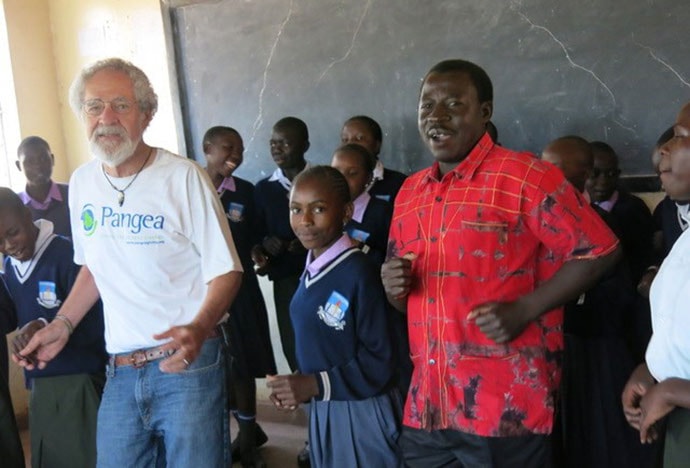
Allan Paulson visiting Pathfinder Academy in Kiminini Kenya. Kenyans always greet guests with a dance. Paulson is with Joshua Machinga, now an alumni partner, advisor to the Africa POD, and Pangea member. Photo: Pangea
Essential to walking along with our partners was developing a relationship of trust: trusting their definition of their needs and the strategies to address them, trusting their understanding of what works in their community and culture, trusting that they will be candid with us. Over the years several of our partners have told us about their screw ups, and organizational setbacks, including stealing by staff, bad purchases of equipment that failed, etc. They described with some amazement the internal debate they had about whether to be honest with the donor and break through the toxic power hierarchy that traditionally exists between donor and grantee.
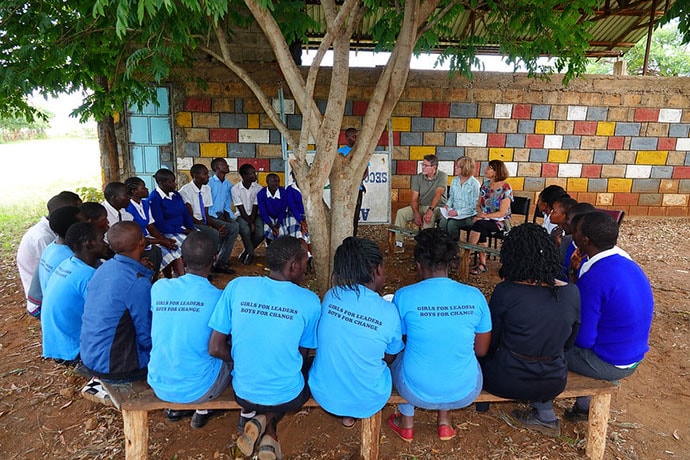
Meeting with YPP’s and Girls and Boys for Change at Athani Secondary School. Photo: Pangea
The approach we have chosen, which has come to be called “trust based philanthropy,” involves a higher degree of risk than many donors are used to. Yes we would all like to hit it out of the park, but sometimes the hose you bought for the water pump to irrigate the fields is too weak, sometimes someone runs off with some of the money we sent, sometimes birds destroy the sunflower crop that was going to be the source of marketable oil. Yes, those things happen, we learn as we go, and move on.
Over time, as we made frequent site visits, we saw opportunities to add value through our personal knowledge and contacts. Some of us facilitated workshops for strategic planning, team building and program development. Some of us mentored leaders and we sponsored a number of our leaders to attend development workshops in Seattle and elsewhere.
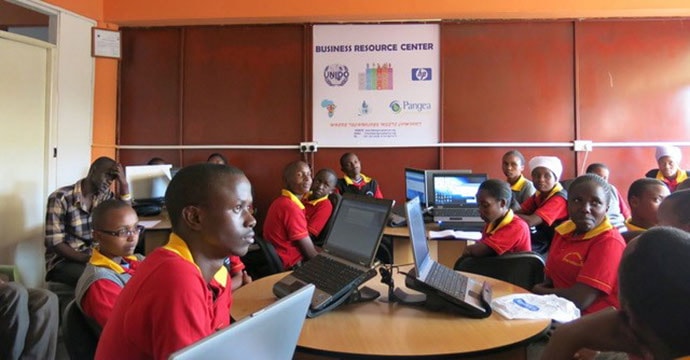
TEARS Group Kenya computer learning project. Photo: Pangea
As our membership grew and our interests diversified, we strove to remain an intimate community by forming PODs (think grant committees) to focus on Latin America, East Africa and Southeast Asia. Though we had certain criteria intended to provide a consistent approach, as we learned the intricacies of non-profit governance and community action in support of social justice in each region, we were flexible in permitting the PODs to set their own criteria. Sometimes we needed to work through other non-profits with established on the ground staff and processes. Sometimes we funded organizations that work across borders where we could not send funds. And although our original intent was to fund small early stage organizations who had not yet accessed international funding, we learned that in some places it was better to work with larger organizations that were nurturing small community organizations in their own country. As you learn what works, flexibility and innovation become key values.
In sum, community, democratic processes, respect, partnership, continuous learning, seeing for ourselves, flexibility and, above all, trust, are what has enabled Pangea to be such a satisfying and enduring experience for its many members and, we trust, of value to our partner communities.
Back to Top
Organization Profile
“A High-Impact Relationship”: Robert Kalulu of CEP Uganda Speaks on his Experience with Pangea Giving
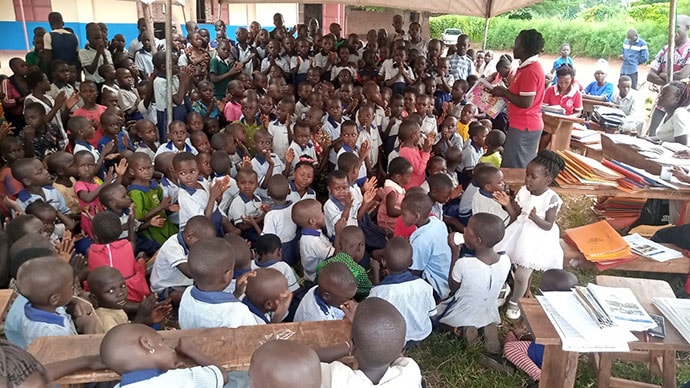
Pupils at an assembly at Orion Junior School. Photo: CEP
Pangea Giving, the newest program of Global Washington born from a merger of the two organizations completed on August 1, 2023, is a Seattle-based philanthropic initiative founded in 2003 with the goal of providing financial support and guidance to growing humanitarian organizations in the Global South. Pangea Giving’s unique model allows donating members to become directly involved in grantmaking decisions by joining regional committees, or Pods, which oversee operations in Guatemala, Mexico, Kenya, Uganda, Myanmar, Laos and Cambodia. For 2023, Pangea Giving announced grants totaling $114,000 to fifteen beneficiaries across Southeast Asia, Latin America, and East Africa.
One of these grantees, Child Empowerment Programme Uganda, is slated to receive $9500 in 2023 alongside guidance and support for their local operations. We spoke with CEP Uganda’s Executive Director, Robert Kalulu, on their experience as a beneficiary of Pangea Giving.
Please introduce yourself and your organization. What is CEP Uganda’s mission, and what are some projects that best represent your organization’s work?
Thank you. My name is Robert Kalulu. I am the Executive Director for Child Empowerment Programme Uganda, a local community-based organization here in the Kamuli District in eastern Uganda.
Our mission is to empower disadvantaged children – especially girls – to reach their full potential, to live happily, respectably and productively. We do this by increasing access to quality education, economic empowerment for women, mentorship programs for adolescent girls and access to basic health services. We run Orion Junior School, where we support 162 children. This is funded by small community contributions from our beneficiaries whom we charge an equivalent of 2 hen ($12) per school term.
If we find that they can’t afford it, this is not a reason for their exemption from school. We also have a work program, where those that do not have anything to pay but can sacrifice hours of work can bring that to the school. We monetize their services as part of the community’s contributions. We also run the YANA Community High School on the same basis, where we support 367 girls and boys, including 20 girls per year who are involved in vocational training and economic empowerment.
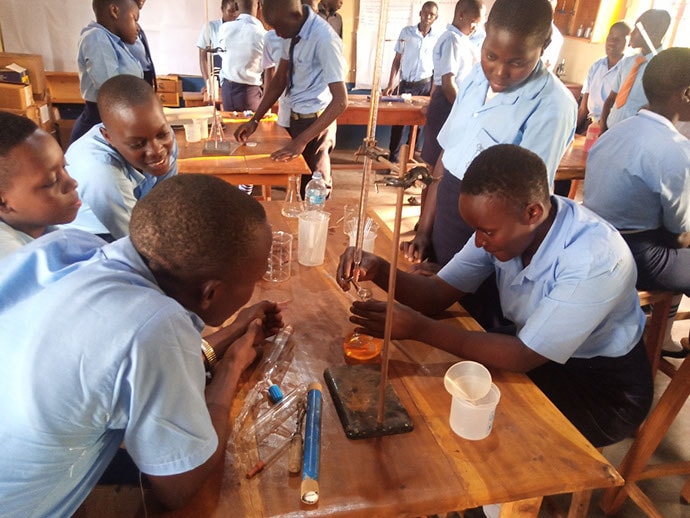
Practical chemistry lesson at Yana Community High School. Photo: CEP
We try to increase options for income generation, especially for widows and disadvantaged women who have children to support. We help them generate income and access credit. We encourage them to start and run sustainable businesses under our mentorship. We strive as much as possible to promote the significance girl child involving them in activities that raise their esteem, promoting income generation and involving them in celebrations like the International Day of the Girl Child, where they get involved in activities with their peers from other schools.
To promote health and access to basic services, we partner with the government and other entities and promote community health to raise awareness on emerging community health issues, we strive to help our beneficiaries access basic health services and sometimes for very complicated cases. For example, we had two children with congenital disorders that we helped to address.
What was Pangea Giving’s vetting process? How long did the process take, and what steps were taken by Pangea Giving to evaluate CEP Uganda as a potential beneficiary?
Pangea has a very interesting vetting process. It begins with a very thoughtful review and discussion. Leaders elected by Pangea will determine whether the organization needs to enroll other partners or not. Once it is clear that they need one, Pangea looks into recommendations from local and international organizations who are working in the region. Pangea will take up the recommendations and request profiles of prospective beneficiaries. These entail the history, mission and goals of these organizations, including a detailed look at the board and staff. The next step is a site visit, if possible and if they are convinced after the visit, that you are an organization that can benefit from their grant program, then they will give you an invitation for an application.
This invitation is not a guarantee that you will win the grant. Another part of their vetting process is a critical look at what you plan, whether it makes any sense or not. If you’re lucky and you win a grant, then you stand a chance of working with Pangea for 5-7 years.
The length of the vetting process varies, depending on how much time it takes for them to build a relationship with you and understand you.
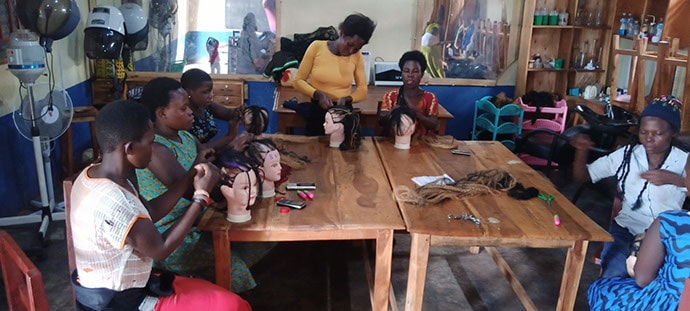
Students of the hairdressing class at Yana Community High School. Photo: CEP
Describe the experience of working with Pangea Giving. How would you evaluate the quality of their conduct as an enterprise, and the impression they have made on CEP Uganda?
I describe my relationship with Pangea as a high-impact relationship, with lots of respect for originality of ideas and shared learning. Pangea strives to learn from each of their grantees and shares the learnings amongst other partner organizations and creates opportunity for organizations to learn from each other through forums like the East African Leaders’ forum. Pangea respects the choices of the organizations they support and facilitates alignment of these choices to the specific needs of the communities served.
They fund ideas that will work and have a high impact for the communities targeted. And they are sometimes flexible when need arise; for example, during the pandemic, when it wasn’t easy for grantee partners to continue with our planned interventions and the world looked at everyone for a solution to the pandemic, Pangea gave organizations an opportunity to redirect the grants to intervene during that crisis. Pangea gave us flexible grants for general operations, which came at a time when many organizations were closing down due to depleting funds – Covid had affected them so much. Therefore, running day-to-day activities had become a problem.
We were lucky to be working with Pangea. Their flexibility had helped us stabilize and try new strategies.
What are the strategies, resources and tactics that Pangea Giving has provided CEP Uganda?
We have received financial support from Pangea. We’ve been able to fund our activities and projects, and met the needs of our communities. We have also been able to enjoy sessions of peer learning where all leaders of organizations funded by Pangea come together annually to share, learn from one another and network. These networks have helped small grassroots organizations to grow.
I did not join charity work as a professional, but out of the needs of the community. I dropped my teaching career to intervene for the community. Therefore, I needed to learn so many basic skills in running an organization, but it would be very expensive to hire persons with the required skills, or to enroll at university since we do not have a slot for that on our budget. But through networking like this, we share knowledge and foster learning, which has enriched our stock of knowledge as grantees of Pangea.
How has CEP Uganda benefited from these services and strategies? What progress has been made as a result of the partnership with Pangea Giving?
Pangea has helped to fund and revive our vocational school. In Uganda, we’ve adopted a new curriculum where much of the learning is practical. At this time, our vocational school will not only take care of the school girls who have dropped out of school, but the entire formal secondary school system; we are looking at expanding the vocational school to benefit the community as a whole. This revival was possible due to funding from Pangea.
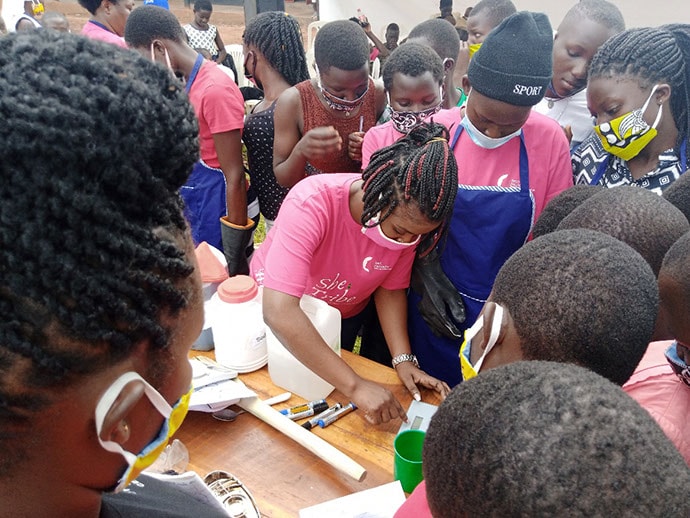
Liquid soap making class for adolescent girls. Photo: CEP
We had challenges accessing the internet where we would have to travel over 12 kilometers from home to use internet cafes in town. Thanks to Pangea’s funding, we now have internet access in the school itself. Teachers can research from within without having to go elsewhere, which has greatly reduced our expenses, improved teaching and the quality of teaching materials.
Pangea also funded the purchase of motorcycles which we used during Covid to access learners in the community. It was not very easy for many students to converge and conduct a usual large class because the standard then was to minimize social. So we organized classes in their local communities and the motorcycles helped us so much in transporting teachers to community-organized classes.
Pangea also helped in leadership development. I communicated earlier that organizations are able to meet and share knowledge – this is due to the East African Leaders’ Forum that Pangea funds every year. Recently we had one in Kenya, and it was so enriching. We generate answers to questions relating to challenges that our communities go through, compare notes, solve them internally, and grow through these forums.
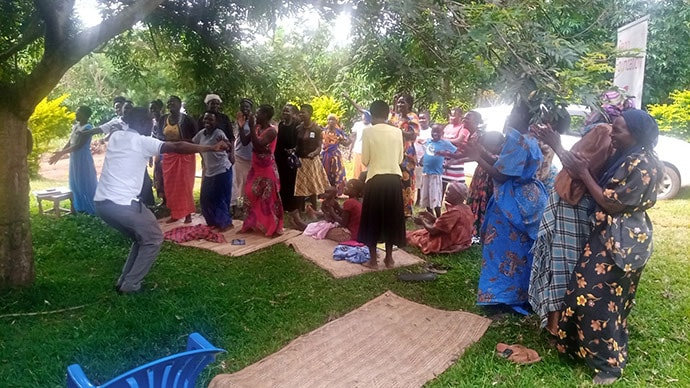
Atambula Empola women group in a financial literacy class. Photo: CEP
We also created new networks, which have been so beneficial for further shared learning and resource mobilization. We have received extra funding from other organizations through these networks. CEP Uganda adopted the idea of table banking from Dandelion and common ground for Africa. The idea fosters savings and peer learning and the two organization are part of our network of East African partners of Pangea.
Back to Top
Organization Profile
Pangea Giving Site Visits Build Trust
By Tyler LePard
Pangea’s founding story
A couple of months after the September 11, 2001, attacks, a group of people in Seattle started meeting to discuss how they could promote better understanding across cultures and countries. A giving circle is one of the ideas that came out of those meetings and some of the participants were drawn together to explore that option. This group of six like-minded people decided to work together to form a giving circle focused on rural community development in the Global South. They chose to create an all-volunteer-run organization rather than spending money on staff.
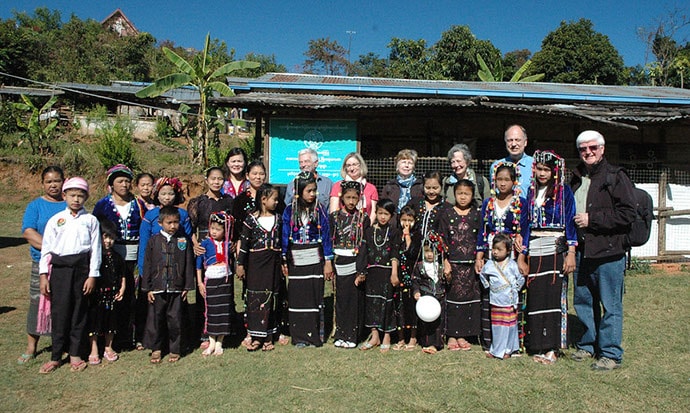
Meikswe ECCD Group, Myanmar, site visit. Photo: Pangea
“The next step was to engage others, so we decided to host an education session on the need for potable water in Central America. We chose this because having potable water is a high leverage issue that affects health, education, and the empowerment of women and girls, who often spend hours a day fetching water, and are vulnerable to assault as they hike though remote areas to find clean water. The Seattle Foundation kindly lent us a space, and we engaged the director of the Pacific Institute in Oakland, a leading think tank about water rights and resilience. At the end of that meeting, 13 people signed up to join the giving circle, and we were ready to begin to plan our first grant cycle,” said Allan Paulson, a founding member of Pangea Giving. (Read more about Pangea’s founding story.)
Pangea Giving was officially created in 2003. The name symbolizes the group’s desire to bring the world’s people closer together.
Site visits are important for partnership
One of the distinctive features of Pangea is their site visits to grant partners. They provide a real-time, real-lived experience where Pangea grows to better understand the social, political, cultural, economic, and environmental issues that their partners live out each day. It’s about building trust.
“I picked Pangea Giving because it’s about engaged philanthropy – more than just writing a check. I wanted to be engaged to learn about where I was giving money. I think that differentiates us some because part of our theory of change is building trusting relationships, and the other part is educating ourselves about the places in the world where we give money,” said Betsy Hale, Pangea Giving Advisory Council member.
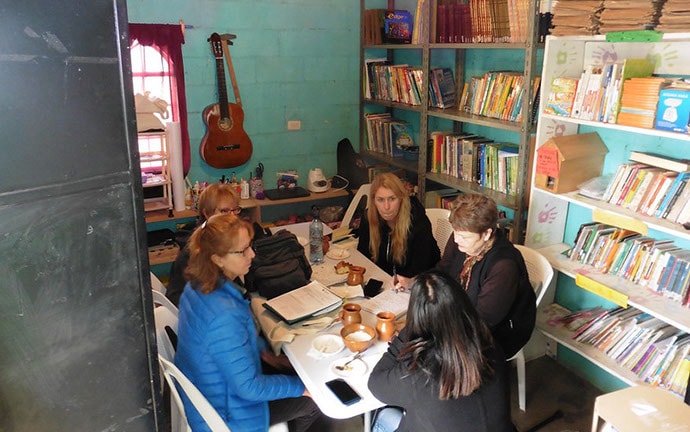
Pangea members meeting with Esperanza School, Guatemala. Photo: Pangea
Spending time with grantees builds personal connections and understanding that strengthens Pangea’s long-distance communication. While on site visits, members assess the leadership and staffing, review financial information, and confirm that grantees are following the grant guidelines and agreements.
“In Oaxaca State, we walked through a nearly-deserted rural village, then sat in the shade and talked with a few elderly farmers who remained working there. It was very difficult for them to continue farming because the water rights of these indigenous people had been taken away to support the voracious needs of the nearby, internationally-owned mine. I finally, palpably, understood why almost all the younger people from the village had immigrated to the United States to seek their livelihood because there wasn’t a viable future left in their village,” said Janet Pearson, Board President for Pangea Giving.
Part of the site visits include meeting with potential new grantees. Pangea mainly learns about potential partners through word of mouth. These may be referred to Pangea by current or previous grantees or organizations with values that align with Pangea.

Visit to Saint Mary’s Primary School, Kenya. Photo: Pangea
“When I went to Laos recently, we traveled by minivan for three hours, then took a small boat upriver for half a day. There was no organized restaurants expecting us. We just fended for ourselves. I think that’s the way it should be. We’re going to visit small grantees where they are. If they’re in a small town, we’re in a small town. The participation, grantee selection, and site visits are what distinguish Pangea from other philanthropic activity that I’ve ever been involved in. Sending a check is just the beginning. Pangea members do everything. We meet people face-to-face, we’re not reading some polished report that they generated … It’s real,” said Paul Silver, Pangea Giving Advisory Council member. (Read more about Paul’s site visit in Laos.)
After the site visits, team members share their experiences and learning with other Pangea members through educational events, blogs, and at regional grant committee meetings. (Learn more about Pangea’s site visits.)
Virtual visits during COVID-19
COVID-19 has shown us how interconnected and interdependent we are in this world. Borders have little significance in the face of a global pandemic and climate change. During the COVID-19 pandemic, Pangea members learned to use Zoom to continue connecting with their grantees. Some grantees didn’t have the technical capacity to use it well, and some had concerns about the possibility of the government listening in, but overall using Zoom allowed Pangea to stay connected and communicate more frequently with their grantees. Of course, in-person visits enable more understanding and deeper trust, so Pangea resumed site visits when they could.
This year, Pangea gave $114,000 in grants to partners in East Africa, SE Asia, and Latin America.
Pangea joins Global Washington
Pangea Giving started with five founding members and grew to a membership of more than 50 individuals and families. Since 2003, it has partnered with 45 grassroots organizations in 13 developing countries and awarded more than $2 million in grants.
In 2023, Pangea Giving joined forces with Global Washington. Becoming a program of Global Washington will help Pangea with the administrative tasks that can be challenging for a volunteer-run organization. Pangea will also be able to increase its member engagement, capacity, educational activities, partner relations, and programs in Seattle.

“It’s a win-win agreement,” said Janet Pearson, Board President of Pangea. “When we formed Pangea in 2003 with the vision to promote more direct and positive international engagement, we could not have imagined a better outcome now 20 years later. By joining forces with GlobalWA we will be able to fulfill our mission even better and reach more individuals who want to join Pangea. And, this is really exciting and necessary, especially with the many challenges grassroots organizations and communities in the Global South face today.” Pearson then adds, “It satisfies our need for expanding grant development, partner relations, and Pangea member support.”
Pangea is looking for people with values that align with theirs to join their giving circle. There are several pathways to membership: give the traditional annual membership fee (at least $1,500 for an individual, $2,500 for a family), contribute in-kind professional services such as translation/interpretation, or donate a different amount of money. Find out more about the giving circle program, or if you feel you are ready, join now.
East Africa Site Visit Team with Dandelion Africa, Kenya. Photo: Pangea
Back to Top
Welcome New Members
Please welcome our newest Global Washington members. Take a moment to familiarize yourself with their work and consider opportunities for support and collaboration!
Grow Further
Grow Further engages farmers, scientists, and investors in participatory innovation for global food security and sustainable agriculture. Growfurther.org
Providence Global Programs
Since 2012, the Providence Global and Domestic Engagement (GDE) department has partnered to make health impact through programs and service that honor the leadership, expertise, and goals of communities around the globe. We live our vision of health for a better world by responding root causes of disparities and working through local partnership to redress the health inequity created by historic colonialism. providence.org/about/community-partnerships/global-and-domestic-engagement
Back to Top
Member Events
September 23, 2023 Mona Foundation: MONA 2023 GALA
September 30 Lifting Those Left Behind Benefit Dinner | The Rose International Fund for Children
October 6, 2023 Agros International: Tierras de Vida 2023
October 25, 2023 A Night In Afghanistan | Benefit for Sahar Education
Back to Top
Career Center
Program Manager – Operations The Max Foundation
Communications Officer The Max Foundation
Vice President, Administration & Chief Financial Officer The Max Foundation
Office Manager / Administrative Specialist Linksbridge
Director of Finance and Operations Seattle International Foundation
Director, Business Development Splash International
Grant Writer Splash International
Cultural Orientation Volunteer International Rescue Committee (IRC)
Airport Pickup Volunteer International Rescue Committee (IRC)
Grants & Contracts Manager Snow Leopard Trust
Director, Monitoring, Evaluation, Research and Learning (MERL) HCP Cureblindness
Engagement Manager Linksbridge
Trainee Consultant Linksbridge
Check out the GlobalWA Job Board for the latest openings.
Back to Top
GlobalWA Events
September 7 Impact through Co-Creation: Transforming Global Funding Dynamics
September 20 Q3 Final Mile Logistics Working Group featuring The Max Foundation
September 28 GlobalWA Annual All Member Meeting
November 30 VIRTUAL: 2023 Goalmakers Conference
December 7 IN-PERSON: 2023 Goalmakers Conference
Back to Top
Empowering Hope: Join the IRC Co-Sponsorship Program in Seattle and Spokane
Posted on August 2, 2023.
By Lidet Gezahegne, Community Sponsorship Coordinator, IRC
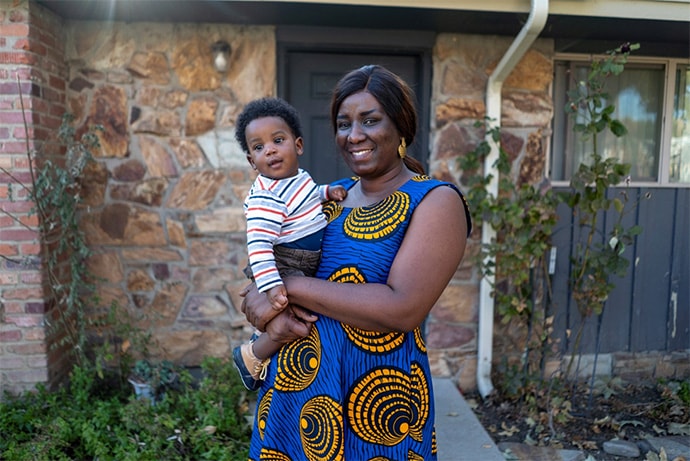
Photo: Andrew Oberstadt for the IRC. Jacqueline stands outside her home with her son, Zoe who is one. Jacqueline Uwumeremyi, 43, fled the Democratic Republic of Congo to South Africa in 1998 because of escalating violence. She and her children were resettled in Boise by the IRC in October 2018. There she was welcomed by the local church community who helped Jacqueline navigate American customs and culture. Today, Jacqueline works as an interpreter, speaking five languages, and she is now the one helping other refugees adapt to their new community.
The International Rescue Committee (IRC) Co-Sponsorship Program is a remarkable initiative that allows ordinary people to make a profound impact on the lives of newly arrived refugees.
This program sets a precedent for how communities can come together to create a nurturing environment, offer hope, stability, and solidarity, ensuring a smoother transition, and brighter future for those fleeing from difficult circumstances.
Continue Reading
The Hidden Risks for Refugee and Displaced Women
Posted on August 2, 2023.
By Women’s Link Worldwide

Czarny Protest| Credit: Iga Lubczańska © Licensed under CC BY 2.0
At Women’s Link Worldwide, we seek to highlight the ways in which women, girls, and gender diverse people – existing at the intersection of varied marginalizations – uniquely live the refugee and migrant experience. We’ve borne witness to how their gender plays a role in their risk of trafficking, sexual violence, inadequate responses to their reproductive health needs, and other human rights violations.
Continue Reading
Pangea Giving Joins Forces with Global Washington
(Seattle, WA – July 31, 2023) Global Washington (GlobalWA), a 501(c)(3) non-profit organization whose mission is to support the global development community in Washington State, announced today that Pangea Giving, a Seattle-based giving circle operating since 2003, will become a program of GlobalWA starting August 1, 2023. The merger of the two organizations will create an unparalleled platform for global philanthropy and strategies to improve lives in low- and middle-income countries.
As a program of GlobalWA, Pangea will be able to increase its member engagement, capacity, educational activities, partner relations, and programs in Seattle. For GlobalWA, having Pangea as part of its growing number of programs increases the ability for GlobalWA member organizations to co-create and partner with organizations based outside the U.S. for increased impact, and will create additional avenues of involvement for philanthropists. All with the ultimate vision to create a more equitable, healthy, and prosperous world.
“This is an exciting moment for both organizations,” said Kristen Dailey, Executive Director of Global Washington. “We will have enhanced services, educational events, and opportunities for co-creation that will include more diverse perspectives and support localization for better outcomes. Merging with Pangea also builds on our work with our Women of the World program that supports female philanthropists who care about global issues.”
GlobalWA board member Jane Meseck is also looking forward to new opportunities, “GlobalWA members will now have more ways to collaborate with Pangea grantees and learn from in-country examples for global philanthropy. It also aligns beautifully with our new strategic plan, expanding our learning network to an impact network.”
“It’s a win-win agreement,” said Janet Pearson, Board President of Pangea. “When we formed Pangea in 2003 with the vision to promote more direct and positive international engagement, we could not have imagined a better outcome now 20 years later. By joining forces with GlobalWA we will be able to fulfill our mission even better and reach more individuals who want to join Pangea. And, this is really exciting and necessary, especially with the many challenges grassroots organizations and communities in the Global South face today.” Pearson then adds, “It satisfies our need for expanding grant development, partner relations, and Pangea member support.”
Pangea’s branding and name will be maintained as a program of GlobalWA. A Pangea Advisory Council will be formed within GlobalWA to continue the vetting, recommendation, and evaluation of grants. The GlobalWA board will have ultimate fiduciary responsibility and final approval of grants, and one Pangea member would become a GlobalWA board member.
For any questions about this announcement, please email Joel Meyers, Director of Communications at comms@globalwa.org.
Learn more about the Pangea Giving program.
ABOUT GLOBAL WASHINGTON
Global Washington supports non-profit organizations, businesses, foundations, and academic institutions in Washington state working to improve lives in low and middle income countries. We connect, promote, and strengthen our members, increasing their impact and advancing a vibrant, innovative, multi-stakeholder network. Our work is driven by the desire to create a more equitable, healthy, and prosperous world.
ABOUT PANGEA GIVING
Pangea Giving is a giving circle that gives their members and supporters direct, thoughtful, and effective ways to help grassroots organizations in the Global South to improve the quality of life in their communities. Their work includes leveraging resources, increasing visibility, sharing best practices, and advocating around education, global engagement, and foreign policy.
July 2023 Newsletter
Welcome to the July 2023 issue of the Global Washington newsletter.
IN THIS ISSUE
Letter from our Executive Director

Over the past two years, there has been a dramatic increase in the number of people forcibly displaced around the world. 19 million people left their homes in 2022 due to conflict, violence, climate change, and other factors making their living situation unbearable. This brought the total number of refugees and displaced people to 108.4 million – a staggering number of people – and solutions for support and resettlement are becoming increasingly challenging.
However, I am hopeful that refugees are finding safe places and services due in part to Global Washington members. This includes emergency responses in places such as Ukraine and long-standing crises in regions such as Yemen and Myanmar, and ongoing programs for settlement and self-reliance. The expertise and resources that our GlobalWA members are bringing to bear is admirable and is certainly making a difference. Read more about these efforts below.
Several of the programs described below are done in partnership with one or more GlobalWA members. Collaboration and building trusting relationships are what GlobalWA is all about. Our network is growing stronger each year as we respond to member needs, make valued connections, and promote innovative approaches to global development. We are extremely excited about our new strategic plan and centering the principles of co-creation throughout our work. We will have new member offerings and new member rates as of August 1st, 2023 to better reflect the growth and quality we aim to provide. You can read more about our new member benefits here. If your organization is interested in becoming a new GlobalWA member, please contact us at info@globalwa.org.

Kristen Dailey
Executive Director
Back to Top
Issue Brief
From Survival to Self-Reliance – GlobalWA Members Untangle the Complexities of the Refugee Crisis
By Aneesh Chatterjee

Afghan children. Photo: Pixabay
Reducing inequalities for all, the central pillar of Sustainable Development Goal 10, is a sentiment exemplified in no small part by efforts to address the rampant and growing refugee crisis. The lack of access to resources, whether they be vital for survival or instrumental in economic success, is a persistent issue present in refugee communities the world over. The number of people displaced around the world due to war, human rights abuses, and persecution reached up to 108.4 million as of 2022, according to the UNHCR’s Global Trends Report. Increasingly strict refugee admission laws have exacerbated the disaster, highlighting a stark pushback against the acceptance of displaced persons.
From emergency relief to education, training and resettlement, GlobalWA members engage with the refugee crisis through unique and impactful interventions, shrinking the gap between these communities and the resources they need.
Building stability: Vital provisions for displaced communities
Displaced populations are at risk of malnutrition, violence, disease, and starvation. To address the lack of crucial survival needs, GlobalWA members have worked to provide effective, essential resources for refugees across the world.

For CARE, providing access to nutrition, sanitation, and healthcare is paramount when addressing the refugee crisis. With programs across the world focusing on multiple populations of displaced persons, CARE conducts exemplary work in providing vital resources.
In the Democratic Republic of Congo (DRC), CARE has provided food rations, sanitation resources for women and disease and gender-based violence prevention training for local refugee communities. In Bangladesh, CARE has helped bolster the community’s healthcare resilience by building an isolation center during the COVID-19 pandemic, capable of housing up to 40 people and created for the Rohingya refugee population. Solar-powered, equipped with medicine and oxygen support, and staffed by doctors, the facility has been instrumental in servicing the local refugee community during the pandemic.
In Venezuela, CARE has taken vital steps to address the rampant displacement of nearly 3 million people due to rising hunger, political violence, crime rates, and inflation. With host nations like Ecuador requiring refugees to have Venezuelan passports to enter, and victims housed in Columbia facing xenophobic violence from locals, refugee populations are at risk of human trafficking, violence, and malnutrition. In 2018, CARE provided cash vouchers, SIM cards and public transportation tickets to displaced communities across Columbia, Ecuador, and Venezuela, connecting them with tangible, practical resources to provide relief from hunger, isolation, and a lack of communication. Refugees in Peru were also connected with shelters and health clinics, while those in Columbia were granted access to legal counsel and other necessary information resources. CARE has taken similar approaches in assisting refugees from Syria, providing food kits, winter survival equipment and access to reproductive health support for women for up to 4.5 million displaced persons in Syria. Beyond provisions, CARE has also helped refugee communities build resilience with agricultural production support, paid work, microfinancing, and access to clean water.
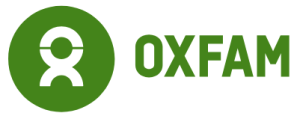
Other GlobalWA members are working to address lack of access to a myriad of specific resources. Adequate water access is a priority for Oxfam America, exemplified by their work in Ethiopia. To supply clean water to refugee camps, Oxfam’s implementation of a 100-kilometer-long pipe network, drawing water from Baro River, treats and directs nearly 1500 cubic meters of water a day. Americares has focused on increasing access to medicine and healthcare for Ukrainian refugees, partnering with 77 local institutions and providing up to $84 million in grants to facilitate medical aid shipments.

Beyond preserving health and ensuring survival, other members focus on building structural resilience in refugee communities, teaching self-sufficiency, and ensuring sustainable economic engagement.
Investing in self-reliance: Training and literacy
Certain GlobalWA members focus on providing refugee populations with the skills, resource access and financial acumen required for self-reliance and long-term stability. To that end, organizations have prioritized financial training and employment as key areas of focus in addressing the refugee crisis.

The Refugee Women’s Alliance (ReWA) highlighted the work of Starbucks in joining the pledge to hire and train 250,000 refugees in Europe, in the wake of displacement caused by the invasion of Ukraine. Announced at the 2023 Tent European Business Summit on World Refugee Day, June 20th, Starbucks is joining Amazon, Accenture, Adidas, Indeed, Randstad, ManpowerGroup, and others in providing real employment to Ukrainian refugees –numbering at nearly 6 million people displaced across Europe.
Starbucks alone has pledged to provide skills training to 86,000 refugees and direct employment to over 13,000. Through their Refugee Employment Program, Starbucks has committed to training Ukrainian refugees in specific retail industry skills, including interview proficiency and customer service. Starbucks’ history with refugee assistance spans back to 2017 at the inception of the Refugee Employment Program, founded on the goal of hiring 10,000 refugees by 2022.
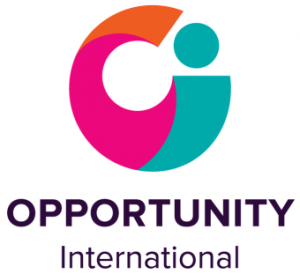
Providing financial assistance to displaced communities has been a cornerstone of development toward the reduction of inequalities for refugees, enabling a tangible distribution of access to the economy, to training resources, and investment opportunities. To that end, the Refugees, Innovations, Self-Reliance and Empowerment (RISE) initiative is a 2019 project by Opportunity International to provide financial literacy to refugees, engage them with the local economy and build long-term resilience and self-reliance for communities in Uganda. Host to over 1.5 million refugees from multiple neighboring states, with a majority coming from South Sudan and the Democratic Republic of the Congo, the government of Uganda has developed response frameworks to allow equal access to sanitation, education and healthcare for refugees. Utilizing cooperation from local institutions, the RISE project partnered with Opportunity Bank Uganda and FINCA to deliver extensive financial literacy services.
Within a year of the program’s implementation, Opportunity International had trained 950 refugees in financial literacy, with 90% of them actively saving their earnings. 200 refugees also reported to be writing financial diaries, which Opportunity International reports has helped motivate participants to earn and save, develop mindsets built for sustainable finance and self-regulation, and worked as a vital window into the personal experiences of refugees during the COVID-19 pandemic.
In June, 2023, Opportunity International entered into a two-year partnership with Rural Inclusion (RI) to use RI’s proprietary Ostrii platform to deliver financial literacy training for populations targeted by RISE (in a new phase of the project dubbed Refugees, Innovations, Self-Reliance and Empowerment—Transition, or RISE-T).
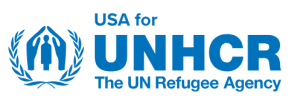
Other GlobalWA members have built additional sector-specific services and resources that address key necessities for refugee communities beyond survival. The Kiva World Refugee Fund, co-founded by USA for UNCHR, finances small businesses operated by refugees – a critical step toward financial freedom, growing beyond simply meeting the basics for survival. Launched in 2017, the Fund provides refugees with credit, financial counsel and zero-interest loans, enabling them to climb out of crisis and participate in the economy. The Global Mentorship Initiative aims to connect refugee candidates with professional networks, train them in digital skills, build resumes and teach other transferrable workplace skills to ensure career success for candidates.
Beyond financial and educational support, the full scope of refugee assistance can be seen in organizations built specifically to address the increasingly complex crisis of displacement.
Broad-spectrum: Dedicated institutions for refugees
Alongside NGOs with multi-sector focuses and specialized branches for refugee support, certain GlobalWA members are built on the foundation of helping refugees across the world restabilize and thrive. With efficacious branches in multiple areas of development, these organizations deliver rounded and comprehensive programs.
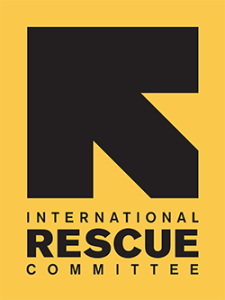
The International Rescue Committee (IRC), created to help people recover from disasters and displacement, provides programs across multiple sectors of focus, having reached over 32.9 million people worldwide. Providing structural resilience, the IRC inculcates safety training in schools and workplaces, ensuring women and children are protected from violence and abuse, and promoting healthy practices for safety and awareness around communities recovering from disasters. The IRC’s comprehensive healthcare goals focus on empowering locals in treating and preventing pneumonia, malaria, malnutrition-related fatalities, and other conditions targeting children. Advocacy services connect people with health insurance, provide access to the proper doctors and necessary facilities, and teach self-care in the long term for lifelong conditions. In the education sector, the IRC works with teachers and parents to ensure a nurturing and supportive learning environment, at school and at home. The provision of reliable and high-quality instructional material and other school facilities accompany their focus on building an enriching educational space for refugees.
In addition to these focuses, the IRC also provides financial assistance and extensive advocacy and empowerment services to ensure that refugees are not denied resources, connections, and opportunities.
USA for UNHCR is another organization built to reincorporate displaced persons into society, with a similar multi-sector approach. Their emergency relief efforts, cash provisions alongside other financial assistance, and education programs are accompanied by their focus on innovative, adaptable technologies. The remote Azraq refugee camp in Jordan was the first to run on solar power in 2017, allowing for nighttime operations, food refrigeration, and prolonged light availability, bringing predicted energy savings at $1.5 million per year – one example of USA for UNHCR’s successful impact in crises using versatile innovation. In the education sector, the organization had helped up to 250,000 refugee children successfully enroll in school by 2018, and had helped 4000 refugees win the Albert Einstein German Academic Refugee Initiative scholarship, opening up opportunities to study at universities across the world.
In addition to developmental programs, USA for UNHCR also helps refugees resettle in the United States. A mentorship program called Hello Neighbor matches newly-settled refugees with locals, providing guidance and cultural acceptance for newcomers. Kids in Need of Defense (KIND) provides free legal counsel for child refugees who arrive unaccompanied, and the Refugee Congress is a delegation with representatives from all 50 states who advocate for refugees in a joint venture.
From preventing starvation at a grassroots level to reshaping mindsets and institutions, NGOs have worked to reduce inequalities for refugees at every level of engagement, across multiple sectors. A collaborative approach that utilizes the specialized focuses of these organizations, alongside the joint expertise of comprehensive refugee-dedicated NGOs, presents as the most reliable path to development in the refugee crisis.
In addition to the above organizations, the following GlobalWA members are working to help refugees, immigrants, and internally displaced persons through their programs in communities where they work.
CARE
CARE is dedicated to supporting refugees and people displaced by war, disaster and drought around the world. For those fleeing crises, CARE is there to provide urgently needed support. In places like Ukraine and Syria and across the borders where so many have fled, CARE distributes relief supplies such as food baskets, water, tents, hygiene and baby kits, dignity kits for the elderly, and kitchen sets. During harsh winters, we support families with mattresses, blankets, floor coverings, and children’s clothing. CARE’s and our partners also work with health clinics, and we place a special focus on the needs of women and girls, ensuring access to maternal and reproductive health care.
During protracted conflicts like the one in Syria, there is also an urgent need to rebuild livelihoods and encourage social cohesion and resilience to help people cope with a long-term crisis. Together with partners, CARE has developed programs that contribute to strengthening the resilience of communities affected by the crisis. This includes providing families with early recovery and livelihoods support, such as agricultural production, cash for work, women’s economic empowerment, microfinance, and psychosocial support programming.
ChildFund
ChildFund International promotes children’s development at each stage of life to ensure infants and young children are healthy and secure, children are educated and confident and youth are skilled and involved in their communities. ChildFund reaches over 10.5 million people across 24 countries – including the United States – through work with local partner organizations, governments, corporations and individuals. We work to strengthen child protection-focused institutions and policies by combining our programs with efforts to influence local and national leaders to prioritize the protection and well-being of children and youth. Approximately 200,000 Americans support ChildFund’s work through sponsoring individual children and investing in our programs.
Concern Worldwide US
Concern Worldwide is an international humanitarian organization dedicated to ending extreme poverty, whatever it takes. Concern believes that no human potential should go unfulfilled due to poverty, disaster, or crisis. Since 1968, Concern has saved countless lives – reaching 36.9 million people in 2020 alone – while working alongside communities to develop programs to help break the cycle of poverty, for good.
Covenant House International
Covenant House International builds a bridge to hope for young people facing homelessness and survivors of trafficking through unconditional love, absolute respect, and relentless support. Its doors are open 24/7 in 31 cities across six countries: Guatemala, Honduras, Mexico, Nicaragua, Canada and the U.S. Its holistic programs empower young people to rise and overcome adversity, today and in the future.
Global Mentorship Initiative
Every college student, refugee, and early career candidates deserves a champion. One person to guide them as they navigate the transition to their first career. Through a structured, online, one-to-one mentorship with a business professional, we are connecting mentees to employment, transforming communities, and building a brighter tomorrow.
Global Rights Advocacy
Academics, defenders, immigrants and innocent persons can be unjustly detained or disappeared. GRA takes their cases to the United Nations or the Inter-American Commission of Human Rights.
Defending indigenous lands, the environment or immigrant rights could trigger retaliation. GRA represents defenders before the Inter-American Commission of Human Rights and the United Nations.
For years we documented human rights violations at the NWDC and reported direct voices from detention to the United Nations and the Inter-American Commission. We work to end immigration detention and partner with La Resistencia.
International Rescue Committee
The International Rescue Committee (IRC) helps people in 40+ countries whose lives and livelihoods are shattered by conflict and disaster to survive, recover, and gain control of their future. Since 1976, the IRC in Seattle has helped thousands of refugees, immigrants, and survivors of human trafficking to rebuild their lives in Washington State.
Jewish Humanitarian Response
JHR has been active since August 2021, providing relief, rescue, and resettlement to vulnerable Afghans facing inhumane living conditions and threats under the Taliban.
Mercy Corps
Mercy Corps is a leading global organization powered by the belief that a better world is possible. In disaster, in hardship, in more than 40 countries around the world, Mercy Corps partners to put bold solutions into action—helping people triumph over adversity and build stronger communities from within. Now, and for the future.
Operation Snow Leopard
Operation Snow Leopard has established an optimized network of Strategic Partners to support Proven Enablers to bring home from Afghanistan every US Citizen and Legal Permanent Resident (LPR), the immediate and extended family members of US citizen and LPRs, and our Afghan allies and partners who served the United States Armed Services faithfully as Afghan special operations, interpreters, security specialists, and intelligence analysts. The situation in Afghanistan is dire and their lives are in our hands, thus we will honor the promise our nation made to protect them.
Opportunity International
In June 2019, Opportunity International launched a pilot project in Uganda to help integrate and financially include refugee and host communities, promote self-reliance among refugees, and stimulate local economic activity in refugee settlements and surrounding communities.
The program began with extensive listening in the Nakivale Settlement. Researchers asked questions about refugees’ financial needs and behaviors, then used this information to develop tools and training designed specifically for these communities. By May 2020, 950 refugees had received financial literacy training and 90% reported that they were actively saving their earnings.
Building on that initial success, we continued to listen to the specific needs of this vulnerable population. With a primary focus on financial inclusion and access, we expanded to services to the Rwamwanja Refugee Settlement – as well as urban refugees populations in Kampala and Mbarra.
Overall, this initiative has created 1,194 jobs and improved 1,560 jobs for refugee youth. We established a branch of Opportunity Bank Uganda Ltd. in Nakivale, and it was officially opened by HRH The Princess Royal, Princess Anne, in October 2022. In April 2023, we began a two-year pilot in partnership with FINCA International to help strengthen the capacity of Early Childhood Development centers in refugee settlements.
OutRight Action International
OutRight Action International is the leading US-based non-profit fighting for human rights for LGBTIQ people globally, especially in places where they face extreme violence, discrimination, and persecution. OutRight monitors and documents human rights violations, supports grassroots activists on the frontlines, and holds governments accountable at the United Nations and beyond.
Spreeha Foundation
Spreeha strives to break the cycle of poverty for underprivileged people by providing healthcare, education, and skills training. Spreeha envisions life without poverty where underprivileged people are empowered to improve their quality of life.
Women’s Link Worldwide
At every level of response to the crises that force people to leave their homes and seek refuge – from authorities setting border policies, to humanitarian groups working to respond, to media that is covering the issues – the ways that women are affected and migrate are overlooked. Issues of sexual violence, trafficking, reproductive health needs, and others remain unaddressed, increasing situations of vulnerability and rights violations. As long as efforts to protect the rights of refugee and migrant women lack this crucial gender perspective, responses will leave out the needs of half the population.
Women’s Link Worldwide works on trafficking, reproductive rights, and refugee and migrant women’s rights in East Africa, Europe, and Latin America. With our partners we identify rights violations and use legal strategies and advocacy to confront the lack of respect for the rights of migrant women. While we litigate single lawsuits, we structure them in a way that seeks changes in the larger systems that protect the rights of hundreds and thousands of other migrant women and girls. For example, our case before the European Court of Human Rights resulted in the end of policies that separated migrant women and their children by the Spanish government. Our client was separated from her son when she was en route to Europe from Africa. Despite having completed all procedures, child protective services did not take any action to reunite her with her son.
Our fight to protect and expand the rights of women, girls, and gender diverse people is a challenging venture, and is a critical contribution in contexts of mass forced migration.
World Affairs Council
The World Affairs Council advances global understanding and engagement throughout the Puget Sound region.
World Concern
World Concern provides humanitarian assistance to refugees and internally displaced persons to address their immediate needs, promote self-reliance, and support their journey toward finding durable solutions. Leveraging an inclusive approach that emphasizes resilience, World Concern provides aid to help mitigate the adverse effects of prolonged displacement, such as aid dependency and negative coping strategies.
World Concern, for example, has supported the refugees in Cox Bazaar in Bangladesh with protection systems that prioritize the most vulnerable people among the affected populations in identifying and mitigating risks and strengthening resilience.
World Concern has supported the Rohingya refugees with appropriate materials for making decent shelters and provided them with hygiene materials and cooking fuel to enhance their living conditions. World Concern has also partnered with others to ensure the refugees receive medical care and meet their food and nutritional needs. Among the youth, World Concern supports their mental health and acquisition of vocational skills.
Women are equipped to start income-generating activities while families are trained to reduce gender-based violence and women and child exploitation and abuse. Though the Rohingya crisis is becoming one of the major neglected humanitarian crises, World Concern continues to support the refugees and host communities by offering protection, education, WASH, and livelihood interventions.
World Justice Project
The World Justice Project is an independent, multidisciplinary organization working to advance the rule of law around the world. Effective rule of law reduces corruption, combats poverty and disease, and protects people from injustices large and small. The World Justice Project conducts survey research and engagement activities in 125 countries and maintains a global network of strategic partners.
World Vision
World Vision is a Christian humanitarian organization dedicated to working with children, families, and their communities worldwide to reach their full potential by tackling the root causes of poverty and injustice.
Back to Top
Organization Profile
Organization Profile: Better Than a Movie: Operation Snow Leopard (Afghanistan)
By Tyler LePard
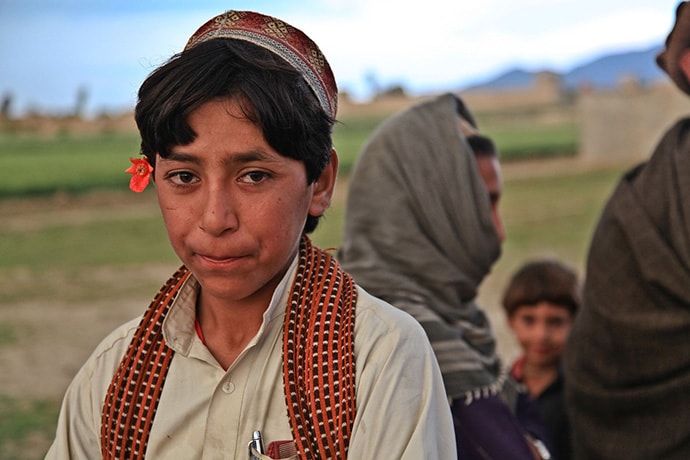
Afghan boy and family. Photo: ArmyAmber/Pixabay
Imagine that your country is in turmoil and you may need to flee your home. You’ll have to leave parts of your family, your livelihood, your community, and your belongings. Where can you go? When is the right time to leave? How will you get there? Maybe the fighting isn’t too close yet, maybe your city won’t fall. And then maybe it’s too late to get to safety. Or maybe your partner or child is too sick. Who can help? For many people around the world, this is a very real scene from their lives.
In the months leading up to August of 2021, it became clear that Afghanistan’s capital city of Kabul was going to fall to the dangerous regime of the Taliban. Many of the veterans associated with the nonprofit group Veterans in Media & Entertainment began to come together to figure out how to evacuate and relocate at-risk Afghans–women leaders, human rights defenders, journalists, interpreters, athletes, musicians, filmmakers, activists, and other vulnerable minorities as the country fell apart.
Veterans form Operation Snow Leopard
This multigenerational group that includes veterans from the Vietnam War to the Iraq and Afghanistan Wars formed Operation Snow Leopard (OSL) with a mission to facilitate the safe evacuation and resettlement of 2,500 high-risk Afghans, primarily women and children on their manifest. It started with veterans who work in Hollywood as writers, directors, actors, producers, editors, accountants, cybersecurity techs, and logistics experts. A few of the people involved are social impact producer Bonnie Abaunza (Blood Diamond, Hotel Rwanda), writer/director Rebecca Murga (Apple TV’s Swagger), actor Caitlin Basset (NBC’s Quantum Leap), led by writer/producer Karen Kraft.
Bob Ness, a life-long humanitarian and OSL senior advisor, brought OSL several key supporters such as Phil Kaplan Fund, the Jackson Foundation, and the Peg and Rick Young Foundation. Bob also introduced the team to Global Washington.
The all-volunteer group has grown to include nurses, pilots, database builders, grad students, and other civilians. There are now nearly 100 volunteers who are part of OSL. They are a team of Christians, Jews, and Muslims from 10 countries who share a vision of solidarity and friendship across all religions and countries around the world.
“On September 1, 2021, over 20 million Afghan women and girls were effectively rendered voiceless under the new regime. We were driven to action by our commitment to keep the promise our nation made, so we will be their voice. This may seem like someone else’s problem, but it’s not, this belongs to all of us because this is a tragic human rights issue, with severe security and economic impacts.” – Karen Kraft, Operation Snow Leopard volunteer, documentary producer and former U.S. Army Officer.
Making progress over the past two years
Initially the main barrier was the mass chaos in Afghanistan and lack of guidance from the governments. No one had a plan. Many people and organizations wanted to help. OSL started calling people they knew at different agencies and embassies for guidance, finding people with relevant skillsets like former diplomats, building relationships, and learning the language of diplomacy and refugee resettlement so that they could figure out how to move Afghans to a safer place.
“When OSL sought to move Afghan Parliamentarians and senators, their Senior Advisor and former US Congressman Dr. Brian Baird of Washington stepped in and connected us to human rights champions like the incredible Juan de Dios Cincunegui, the Deputy Director of the School of Government at Universidad Austral in Argentina. De Dios connected us to the International Parliamentary Union to find support and grew our global circle” explained Kraft. “Meanwhile, OSL’s legal advisors, Christopher Dempsey, a veteran who served in Afghanistan and later as an attorney for President Obama’s Department of Justice, advocates with high-level DHS officials.

Jason Hatch (left), OSL volunteer, and Juan de Dios Cincunegui of Argentina at the 146th International Parliamentary Assembly in Bahrain.
OSL also works with many other nonprofit and faith groups as they have built an underground railroad helping legally move people out of Afghanistan to safety. Retired US Army officer and former diplomat, Jason Hatch, runs their Afghan Digest, a free online publication providing open-source daily analysis with the input from dozens of Afghans.
As OSL secured international connections, countries like Canada and Argentina stepped up to help, and more people joined the effort, they made progress in evacuating and relocating Afghans. OSL made a commitment for a 2-year mission, thinking that’s all it would take. But, of course, Afghanistan wasn’t the only world crisis. In February of 2022, Russia invaded Ukraine, which moved the whole Afghan issue to the backburner. Without the constant attention, it got harder to put pressure on government officials who were now pulled in new directions. OSL had to learn to continually adapt to world stage changes and also to learn how to fit into existing programs with the United Nations High Commissioner for Refugees (UNHCR). Now, OSL has dropped the 2-year time timeframe.
OSL has achieved a lot in two years: they have evacuated and relocated more than 1,800 at-risk Afghans to date. They aim to evacuate at least 300 more families by early 2024.
Dost’s story
Dost Safi works as the Director of Security and Logistics for Operation Snow Leopard and has recently become an American citizen. He served as a U.S. Special Forces interpreter in Afghanistan for nearly a decade. He now leads a team of nearly 40 Afghan women and men in OSL helping to evacuate and resettle doctors, judges, athletes, and professors, as well as artists, musicians, and even a prominent actress. “I suffer for my people. I know the pain, stress, and anxiety of losing your home. I don’t want others to feel the same. The more you help others, the more inner peace you find, and the more you honor God,” said Dost.
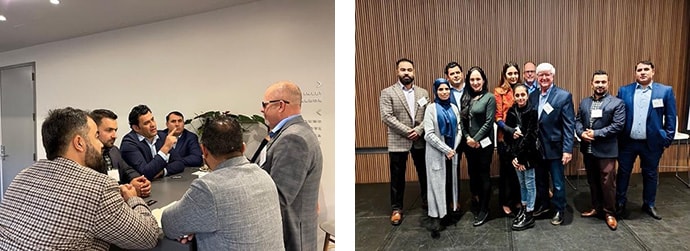
Dost Safi leading a breakout session of Afghans sharing ideas on how to continue the evacuation of their families and friends in dire straits. Global Washington Goalmakers Conference, 2022.
Dost attended the 2022 Global Washington summit with four of his Afghan colleagues. “I was amazed by the diverse group of Americans and nonprofits all just wanting to help others. It’s humbling and encouraging to witness this goodness. I don’t know if the people of Washington understand how special it is to see this kind of gathering,” Dost shared.
Sam’s story
“After the Taliban’s takeover, I lost my home and hopes within a few weeks, even being alive seemed like a weak possibility. By evacuating me and my family to safety, OSL gave me the hope to build a home in America and the chance to live in safety,” said Sam, a young woman and recent Afghan college graduate.
“I now work as an Admin Assistant at the Mayo Clinic. I am a board member of a local legal nonprofit while serving as a human rights commissioner in the county where I live. I have been through a lot, but now I am safe and it is a reminder to make the world at least a penny better, and ensure no one will ever experience what I have overcome.”
Sam continued, “Thanks to OSL, and people involved in our evacuation, now, I am alive, hopeful about the future, and have somewhere to call home.”
Sayed’s story
“We are very blessed to be helped by OSL getting my family safely to the USA,” said Sayed Zewary, a former Afghan Army officer and linguist. “We came to San Diego, CA, where I found our biggest Afghan community and friends. My father started working in a retail store while taking care of my mother. My sisters are thriving: one is attending law school this fall, another graduated from high school, and the youngest is still in high school. This is something none of their girlfriends still living in Afghanistan can do under the Taliban today.”
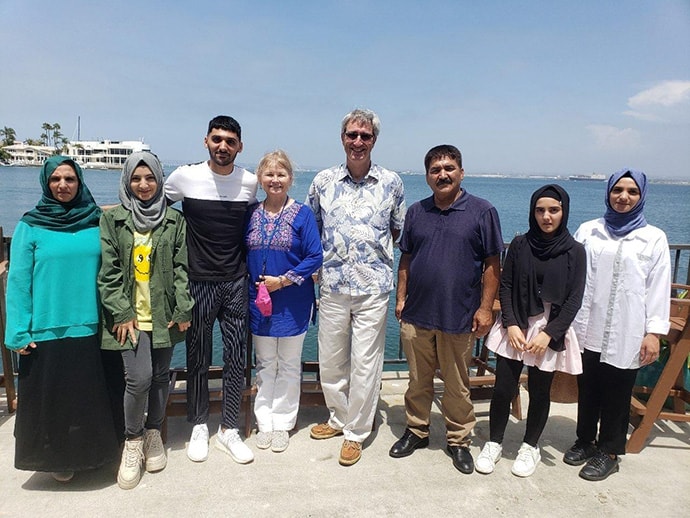
Sayed Zewary (3rd from left) with his family and OSL Senior Advisor, attorney Jill Olen, and OSL Volunteer Marvin Heinze in San Diego, California.
Sayed currently works in an international organization as a coordinator for a program that serves asylees and survivors of human trafficking and domestic violence. “The attacks on women rights around the world will only stop if men step up and help. It is an honor to serve this way,” said Sayed.
Get involved and support Afghans
It doesn’t stop with evacuating people from Afghanistan. OSL gives monthly support to more than 200 Afghans in Islamabad, Pakistan. They also care for many other Afghans still in-country, which requires complex operational planning and support. They work hard to raise funds every month for lodging, food, medical needs from colds to pregnancies to heart issues, and documentation assistance such as passports and visas.
“I’d like to throw down a challenge to people reading this article: This is hard volunteer work, but it’s the most meaningful you’ll ever find. You will find yourself in the trenches with like-minded people. It will renew your spirit. You’ll find yourself super excited to be contributing. Please Get involved today.” – Karen Kraft
Back to Top
Goalmaker
Elfatih Abdelnabi, Immigration Program Manager, International Rescue Committee
By Amber Cortes
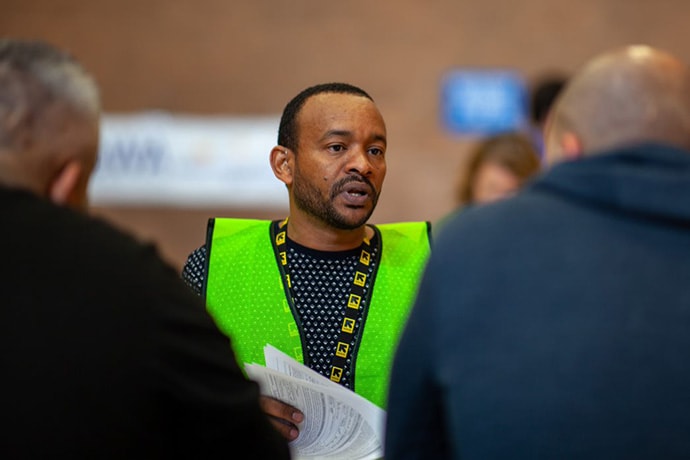
Elfatih Abdelnabi, Immigration Program Manager, International Rescue Committee. Photo: IRC
It started with his own family. Now, Elfatih Abdelnabi helps refugees all over the world reunite with theirs.
Elfatih Abdelnabi never expected he would end up in Seattle. In fact, at first, he didn’t even know where Seattle was.
In 2000, he had started the difficult journey from his home country of Sudan and made it to Egypt, where he applied for refugee status and was awaiting placement with the International Rescue Committee (IRC).
His placement turned out to be in Seattle. This was before the ubiquity of the internet and cell phones, so he looked it up in books, but couldn’t find it.
“It’s because I was focusing on all the famous areas of the U.S.,” he says with a laugh.
When he asked where Seattle was during orientation, and they showed it to him on a map, he was incredulous.
“’What, are you serious? You’re going to take me all the way there?’ And that was exactly my reaction at the time,” says Abdelnabi. “But guess what, here I am! I fell in love with Seattle, actually, I call myself a Seattleite, and now I feel that that cannot live anywhere else.”
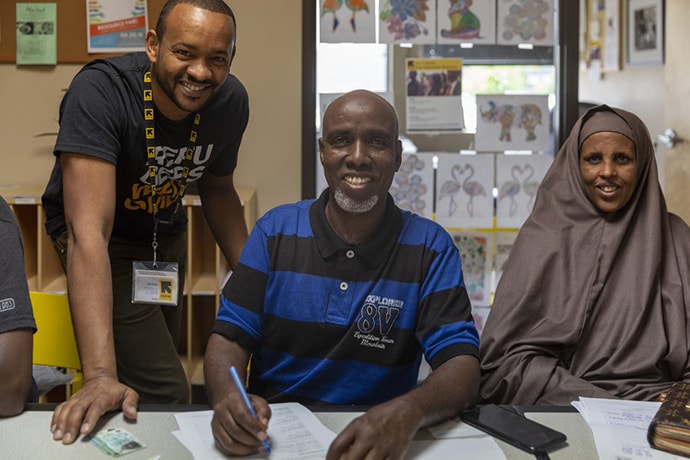
Elfatih assisting immigrant refugees in Seattle. Photo: IRC
Abdelnabi was born in Khartoum, Sudan, where he lived an idyllic childhood growing up with his large family of three brothers and three sisters. That is, until June 1989 when the Sudanese Armed Forces, with support from the National Islamic Front, took over the democratically elected government in a coup d’état.
“Our life just turned upside down,” says Abdelnabi. “We used to own a house, a car, we used to go to nice schools, you know, so, exactly that middle class kind of life, but then all of a sudden, when the coup happened, everything changed.”
The new Al-Bashir government banned all political parties, imposed strict dress limitations for women, and eradicated the free press.
Abdelnabi, along with his family, were harassed for their political beliefs and activities. His father lost his job, they lost the house and their family of nine started separating because they couldn’t all be safe in one place.
Once he made it to the United States, Abdelnabi had only one thing on his mind —helping get his family members get there, too.
“So the first thing I did when I immigrated here is start the process to sponsor my mom and dad.”
Abdelnabi managed to get his parents to the states, along with some of his brothers and sisters. All while working multiple jobs to support himself and seeking to complete his education, which had been interrupted by the coup.
One day in 2016, Abdelnabi dropped by the IRC office to check on the status of a family member. As part of his program in Business and Information Technology at Seattle Community College, he needed to fulfill an internship requirement of 150 hours.
That’s when he happened to notice the volunteers there that day.
“That immediately caught my eye. And I was like, I have 150 hours. Do you guys want them? So imagine, from the time I started doing the 150 hours until now, I’m still here; I have not left.”
At IRC, Abdelnabi tried on all the hats—volunteering, interning, and working the front desk— until he found himself “really knowing like everything going on at the IRC.”
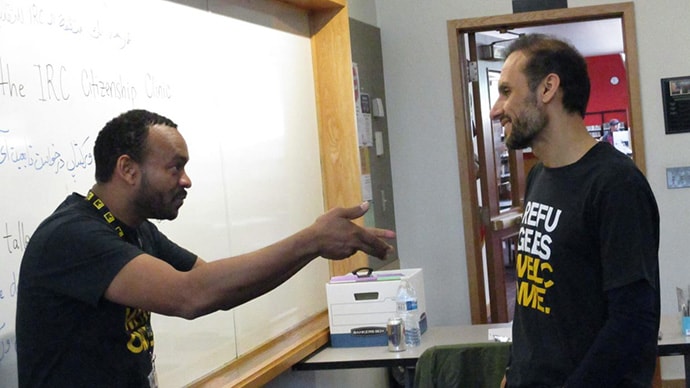
Elfatih Abdelnabi, left. Photo: IRC
Eventually, Abdelnabi was offered a position as Immigration Assistant; today his current position is Manager. In his role, Abdelnabi provides direct services to refugees arriving in Seattle and oversees the Immigration department. He is also actively involved with IRC’s new branch in Spokane to start providing effective immigration services, which are in high demand in the area, by hiring, training, and supervising the immigration team.
Because IRC works to support refugees in all areas of their life: education, health, safety and economic empowerment, Abdelnabi’s team of colleagues under the Housing & Development Team also arranges housing logistics for the Seattle co-sponsorship program, which opens up opportunities for volunteers to get involved in IRC.
Immigrations service, says Abdelnabi, is more than just knowing how to fill out an application. “Clients, they come to us from a lot of different backgrounds, and have a lot of different needs, but the same need is always about safety. It is all about family.”
Having been through it, Abdelnabi knows this well. That’s why he is able to bring not only what he’s learned sponsoring his own family to the role, but also the depth of his lived experience as a refugee. This means a lot to his clients, who even call him family.
“It takes a lot of emotions to work with immigration clients. I try to advise my team or my new people, try not to be emotional when listening to their stories, but it is too hard.”

Elfatih Abdelnabi. Photo: IRC
And it also means quickly responding to each global crisis as it unfolds: during the Fall of Kabul in 2021, Abdelnabi woke up to hundreds of emails, and had to pivot fast.
But that moment when he gets to see families reunited at the airport makes it all worthwhile.
“The best reward I have in this job is when people get together, when families come together.”
As a former refugee himself, Abdelnabi wants to fight the stereotypes people may have of refugees. “One of the things that refugees are facing is that they have been discredited—discredited for their accent, for their native language, anything,” says Abdelnabi. “But actually, they prove themselves to be capable, if they are given the chance. You know, they are actually very trustworthy.”
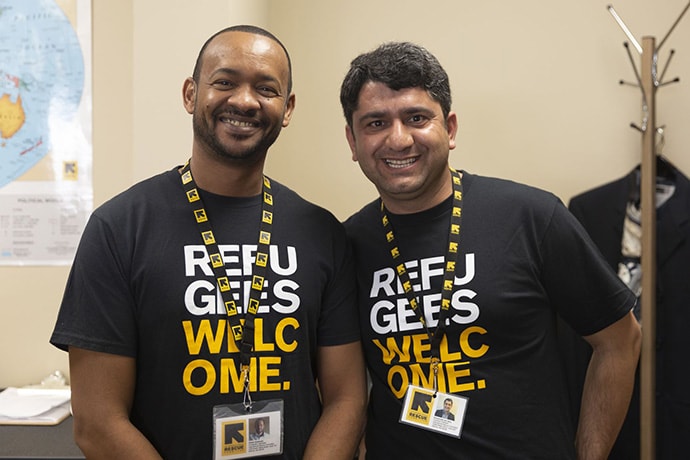
Elfatih Abdelnabi, left. Photo: IRC
And recently on June 20 (World Refugee Day), the IRC launched a campaign sharing stories of refugees as changemakers who contribute to the culture and economies of the countries they end up calling home.
But if you are looking for changemakers, look no further than Elfatih Abdelnabi and his remarkable life path. After enduring his own refugee journey, he went from sponsoring his family to helping families all over the world find safety and a better life.
“What I learned from my own lived experience is what I’m trying to teach people right now.”
Back to Top
Links for Issue Campaign
Highlighted Social Posts:
World Vision: What is a Refugee?
UNHCR /USA for UNHCR: Global Trends Report 2022 | UNHCR
International Rescue Committee: 110 million people displaced around the world: get the facts | International Rescue Committee (IRC)
Mercy Corps: Stronger together: Local partners provide critical aid in Ukraine and beyond | Mercy Corps
USA for UNHCR: Democratic Republic of the Congo Refugee Crisis Explained | USA for UNHCR (unrefugees.org)
CARE: Displacement continues to disproportionately impact women in the DRC | CARE International (care-international.org)
Concern WorldWide: Emergencies & Refugees | Concern Worldwide (concernusa.org)
Oxfam: Bringing relief to refugees | Oxfam (oxfamamerica.org)
Americares: War in Ukraine | Americares Emergency Response
Covenant House: Youth Migration | Covenant House
Mercy Corps: A big bet on helping refugees build their dreams | Mercy Corps
Opportunity International: Refugees | Opportunity International UK
Back to Top
Welcome New Members
Please welcome our newest Global Washington members. Take a moment to familiarize yourself with their work and consider opportunities for support and collaboration!
Diversity Travel
As an award-winning travel organization for non-profit travel, Diversity Travel specializes in fully integrated travel services for the humanitarian, faith, and NGO sectors. Its non-profit travel experts support with travel arrangements to familiar and more obscure areas of the globe, with access to exclusive and flexible humanitarian airfares.
Diversitytravel.com
Back to Top
Member Events
September 23: Mona Foundation: MONA 2023 GALA – 11:00am PT
October 6: Agros International: Tierras de Vida 2023 – 6:00pm PT
Back to Top
Career Center
Administrative & Student Services Coordinator Remote Energy
Director, Business Development Splash International
Grant Writer Splash International
Operations & Administration Manager Amplio Network
Communications Officer The Max Foundation
Cultural Orientation Volunteer International Rescue Committee (IRC)
Airport Pickup Volunteer International Rescue Committee (IRC)
Fund Development Manager Mona Foundation
Grants & Contracts Manager Snow Leopard Trust
Director, Monitoring, Evaluation, Research and Learning (MERL) HCP Cureblindness
Vice President, Administration & Chief Financial Officer The Max Foundation
Engagement Manager Linksbridge
Trainee Consultant Linksbridge
Climate Engagement Officer FSC Investments & Partnerships
Director of Finance and Operations Seattle International Foundation
Check out the GlobalWA Job Board for the latest openings.
Back to Top
GlobalWA Events
June 28: Building Bridges to Health: Advancing Global Access to Quality Healthcare – 1pm PT
November 30: VIRTUAL: 2023 Goalmakers Conference
December 7: IN-PERSON: 2023 Goalmakers Conference
Back to Top
New Endowment for Grant Pool Established

Leslie Grace, March 2009. Photo by Dawnee Dodson, Courtesy University District Museum Without Walls
Pangea’s board of directors recently approved the creation of the Leslie Grace Grant Pool Endowment Fund. Seed funding for the endowment was made possible by a generous gift from the estate of Leslie Grace, as well as from four current Pangea members who expressed interest in contributing to the establishment of the fund. The fund’s initial principal, totaling approximately $70,000, will be invested, and a portion of this new endowment’s income and growth will be used to support Pangea’s grant pool each year.
Leslie Grace was a long-time member, and active in Pangea until her passing on May 1, 2022. The creation of the Leslie Grace Grant Pool Endowment Fund will complement our existing Education and Capacity Building Fund, a separate endowment that was established in 2019 to support Pangea’s member learning and engagement activities.
Continue Reading
Pangea Celebrates 20 Years of Grantmaking
On June 4, 2023, Pangea members and friends gathered at the Mt Baker Community Club to celebrate Pangea’s 20th anniversary. Below is an excerpt from the presentation made at the event by Janet Pearson, Board President.
When I look around the room….my heart is filled with joy. Because we are finally able to come together as a community. The last time we gathered for an annual meeting was in 2019. That seemed like a long time ago! For such a people-oriented group – it’s fair to say that these last few years have been a challenging time.
Continue Reading














 Greg Nelson spent most of his career witnessing (and participating in) historic digital transformation. Now, he’s bringing it to the global development world.
Greg Nelson spent most of his career witnessing (and participating in) historic digital transformation. Now, he’s bringing it to the global development world.




































